There are some places in the world that are so unusual, so mystical, so strange, so stunning – that it is hard to believe that they belong on this planet at all.
From peculiar geological wonders to brightly coloured lakes, stark deserts to steaming volcanoes, mother nature has an incredible way of challenging our perceptions and leaving us in awe.
Here are 30 such otherworldly landscapes that can be found across the planet. And surprisingly, you don’t require a spaceship (or a magic mushroom cocktail) to visit them…
The Blue Lagoon – Iceland
Contributed by Sam Sees World
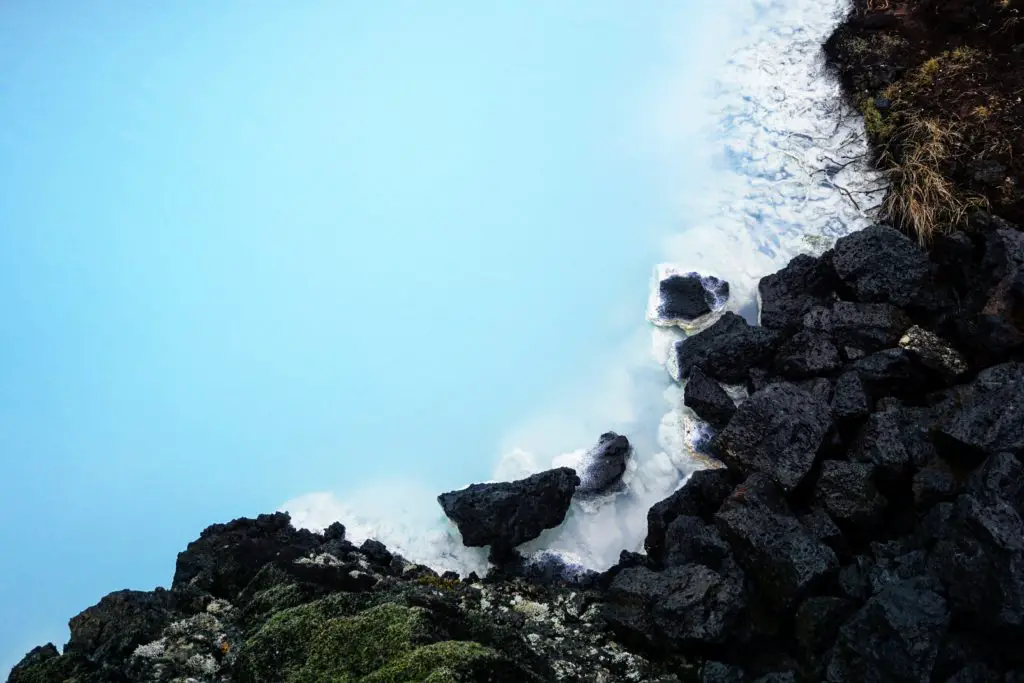
The Blue Lagoon is an amazing natural phenomenon located in the magical country of Iceland. It is so impressive that it is actually one of the 25 wonders of the world. It is made almost completely from naturally occurring elements in the area. The Blue Lagoon spa uses Iceland’s unique volcanic landscape to shape the pools and the water is geothermally heated and packed with minerals.
It is not only the unique formation of the pools and beneficial waters that attract people to this amazing spot, but the milky blue water that looks almost dyed blue. However, this blue hue is due to the silica that is in the water.
The water temperature is kept between 98 to 104 degrees Celsius which means it is open for visitors year-round. As a tourist, you can enjoy a very unique spa day in the pools where you get a free natural face mask to cleanse your skin, the ability to visit the swim-up bars, and a generally unforgettable experience. The magic of the Blue Lagoon is something everyone should experience once in their life.
Deadvlei – Nambia
Contributed by Drink Tea & Travel
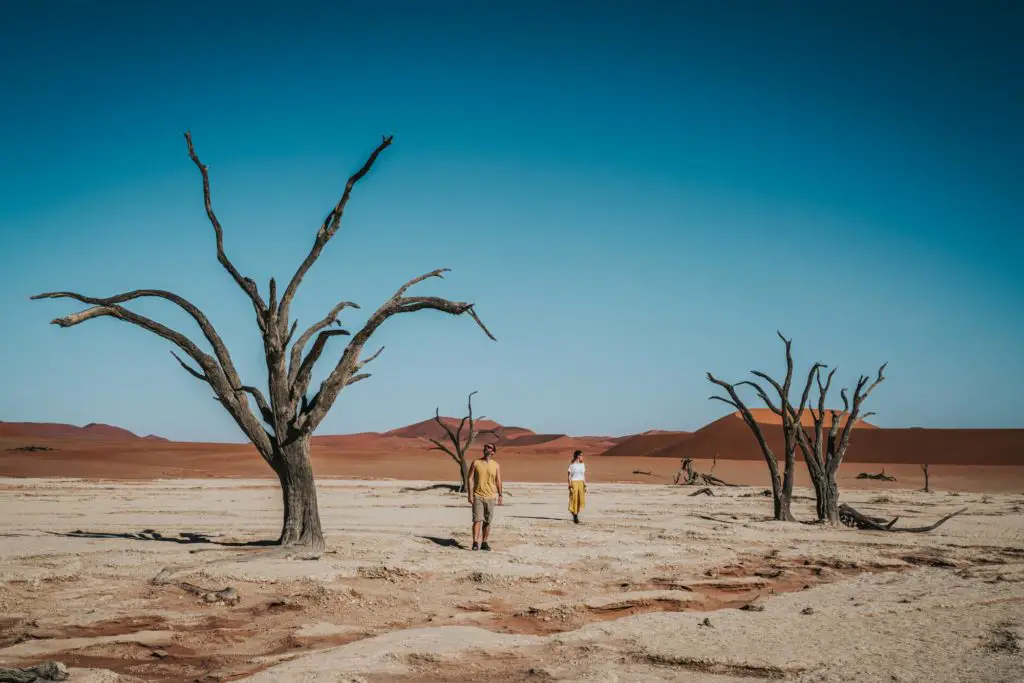
Known for its otherworldly landscape, Deadvlei in Namibia is one of the most iconic landscapes in Africa. The white salt flat and ancient trees provide a stark contrast to the red sand dunes which surround it.
Located in the Namibia Desert, Deadvlei was formed thousands of years ago when the Tsauchab river flooded the area. As a result of the flooding, camel thorn trees began to grow out of the marsh and have remained upright ever since the area dried up and formed a salt flat.
Deadvlei translates to “dead marsh” and, despite its name, it is one of the most picturesque places in Namibia. There is very little public transport throughout Namibia and no nearby airports so most people reach Deadvlei and the greater Sossusvlei region by car. It is about a 5 hour drive from Windhoek, the international gateway to Namibia, however a visit tends to be part of a larger nationwide road trip.
There is more to see in the vicinity of Deadvlei then just this single attraction. You can climb some of the tallest sand dunes in the world, star gaze, explore Sesriem Canyon, and marvel at the desolation. It is truly an incredible place to visit.
Rainbow Valley – Hormuz island, Iran
Contributed by Experiencing the Globe
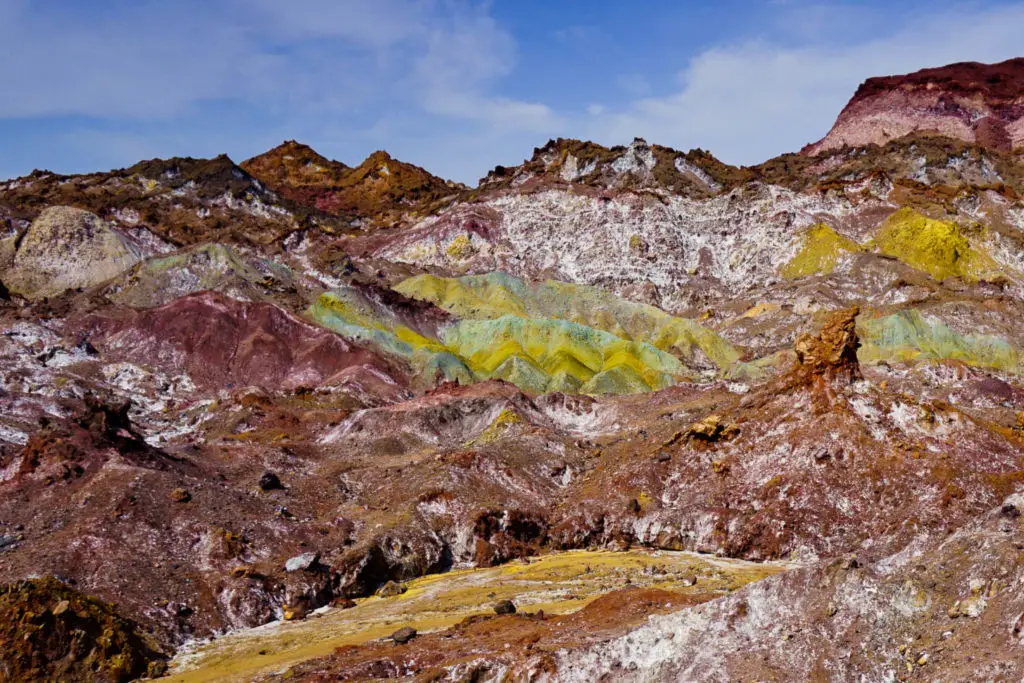
I’d dare to say that in every corner of Iran you’ll find something wonderful – the whole country is a photographer’s dream! Between the impressive architecture, the lovely people and the stunning archeological sites, you can find immeasurable beauty. But what surprised the most was the nature. Mountains, deserts and even tea plantations are part of the landscape. My personal favorite was Hormuz island.
The place is tiny (only about 20km/13mi to encircle the island), but its diversity is beyond what you could imagine. You can see the deep blue Persian Gulf around you, but there’s also a red beach, where the pigment of the soil tints the water. You can go from the Mars Valley, to the Valley of the Statues, to the Silence Valley and see the multi-hued earth, changing colors as it mixes with salt, and the spectacular result of altitude changes.
But the most otherworldly spot is the Rainbow Valley and Caves. Shades of purple, yellow, blue, red and orange dye the mountainside as a result of the uneven cooling of molten rock.
Go during sunset to see the colorful mountains in all their shades while they play with the last rays of sun.
Yellowstone National Park – Wyoming, USA
Contributed by Czech the World
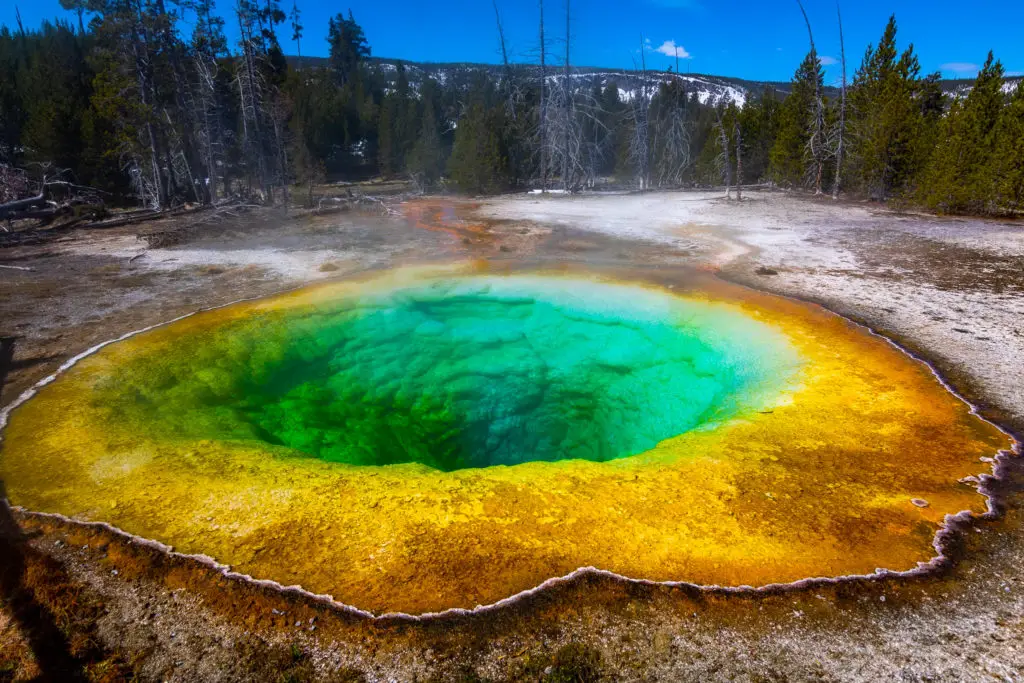
Yellowstone National Park in Wyoming is a true natural wonderland. The whole park sits on top of a giant supervolcano and you can find there over 60% of all the world’s geysers and about 10,000 other geothermal features! Yellowstone definitely belongs among the most fascinating national parks in the USA.
Yellowstone covers 3,472 square miles (8980 km²) of wilderness and it’s home to bison herds, bears, coyotes, wolfs, and elks. You will be amazed to see all these colorful hot springs, erupting geysers, bubbling mud pots, fumaroles, and steam coming out of the earth. There are simply so many beautiful things to see in Yellowstone National Park, that you should rather plan a longer visit.
One of the most famous geothermal features in the park and 3rd largest hot spring in the world is the Grand Prismatic Spring. Other places you shouldn’t miss is the Upper Geyser Basin with the Old Faithful geyser and the monumental Grand Canyon of Yellowstone that will take your breath away.
In case you are a fan of hiking and camping, there are more than 900 miles of hiking trails! Just remember that you are in the bear country so always follow bear-safety rules!
Mitzpe Ramon – Israel
Contributed by Migliori Romanzi Storici
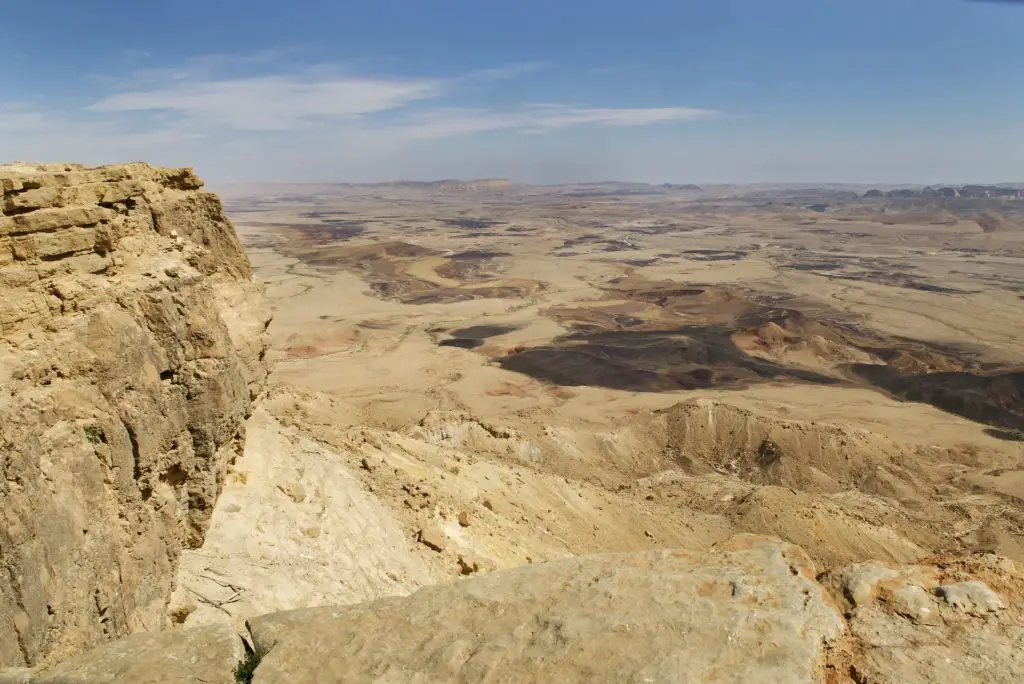
There is one place I saw during my travels that left me completely astonished: the Mitzpe Ramon Crater in Israel. Despite some legends, this lunar scenery that seems like it’s straight from a Star Wars movie, was not the impact point of a meteorite. It was created in million years by water erosion.
You can have the best view of it coming from the north of the country. After a few dozen kilometres in the flattish Negev Desert, you find abruptly in front of you a huge depression that can reach almost five hundred metres below the starting point. From the observatory near the road, you can have an impressive view over the forty kilometre wide crater, known as Makhtesh Ramon.
The main activities to be done in the crater are long and beautiful hikes, but also bike or buggy excursions.
I highly recommend you to stop here in a north-south (or vice versa) road trip through Israel and the Occupied Palestinian Territories. Coming from Tel Aviv and Jerusalem, stop in the historic place of Masada, then reach Mitzpe Ramon and continue for two more hours until Eilat, on the coast of the Red Sea.
The Sahara Desert – Northern Africa
Contributed by Both Feet On The Road
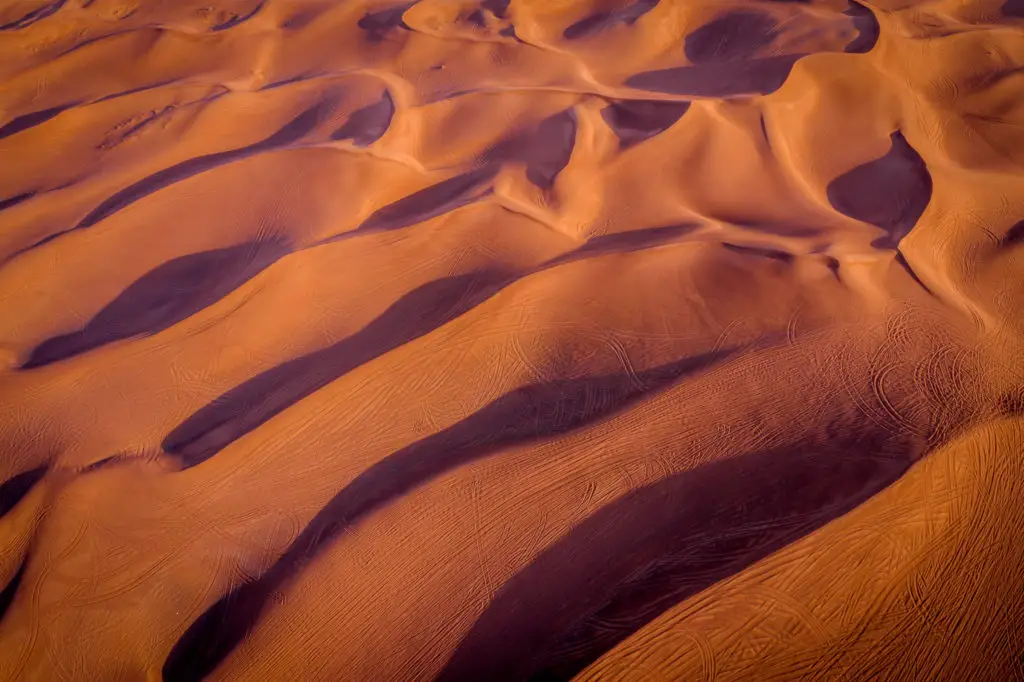
About the size of the United States, the Sahara is the largest hot desert in the world and covers almost 31% of Africa. Those facts alone would already make the Sahara desert worth a visit. However, the mere beauty the endless yellow sand dunes and clear blue skies are another reason why the Sahara desert should be on your bucket list!
Only 4 million people manage to survive in the very few areas with water (oases), which means that most of the area is uninhabited sand dunes, mountain ranges, and rocky steppes. At least 4,000 years ago the Sahara used to be a fertile and lively savanna grassland. However, the decrease in rainfall over the years have shaped the Sahara into the landscape as we know it today. An otherworldly stunning, but dry desert wilderness.
The Sahara runs through quite a number of different African countries, including Algeria, Chad, Egypt, Libya, Mali, Mauritania, Morocco, Niger, Sudan, and Tunisia. This offers many different opportunities for tourists to visit different parts of the desert.
The best way to experience the desert is by taking a multiple-day tour, watch the sunset over the dunes, camp under the starlit sky, and wake up early to see the sunrise again and enjoy this magical view
Bimmah Sinkhole – Oman
Contributed by A One Way Ticket
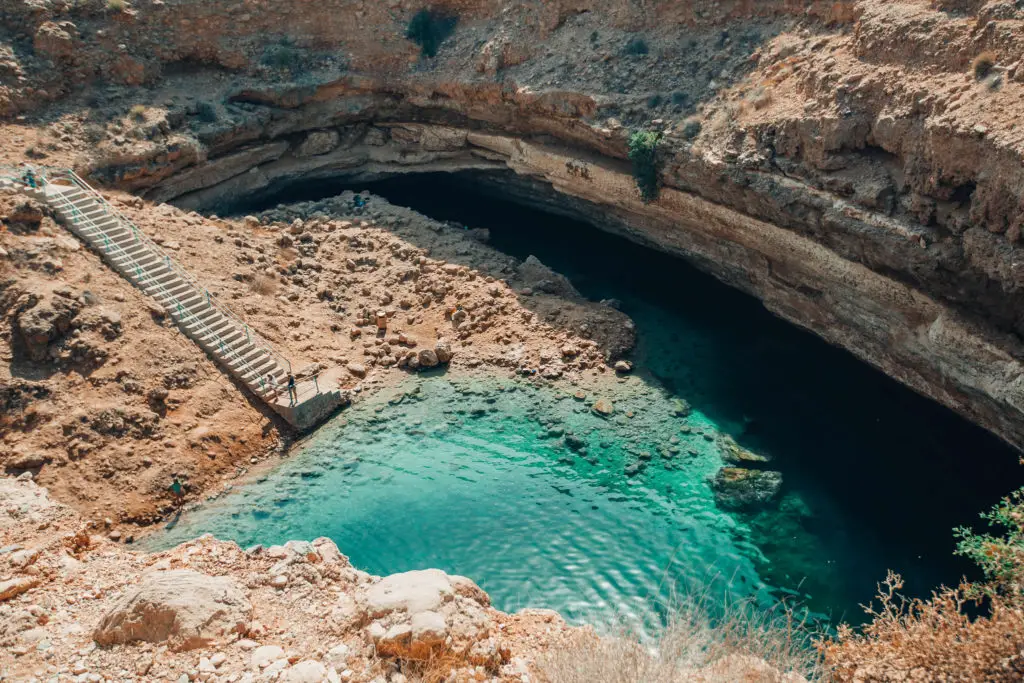
The Bimmah Sinkhole, otherwise known as Hawiyat Najm, is one of the most beautiful and unique things I’ve seen during my travels. It’s located in Oman, about 120 km outside of the capital city of Muscat and is an absolute must visit.
The sinkhole was formed by a collapse in a weak area of the limestone, but locals once believed it was formed by a meteorite long ago. It’s a great way to spend a couple hours on a hot afternoon in Oman.
The parking lot at the Bimmah Sinkhole is free and large enough for a good number of vehicles. There’s a park that’s been built around the sinkhole with bathroom facilities and picnic tables if you want to have lunch while visiting. Upon entering the park, you would never realize there’s this gorgeous swimming hole just a short walk away.
Once you walk up to the sinkhole, you’ll be taken aback by how stunning it is. The golden limestone perfectly complements the turquoise water that fills the sinkhole. It’s equally as beautiful from the top as it is from inside. After admiring the sinkhole from the top, take the stairs down and spend the next hour or two swimming around, cliff jumping, and even getting a free fish spa pedicure from the little fish who call the sinkhole home.
Mt Ijen – Indonesia
Contributed by Cassie the Hag
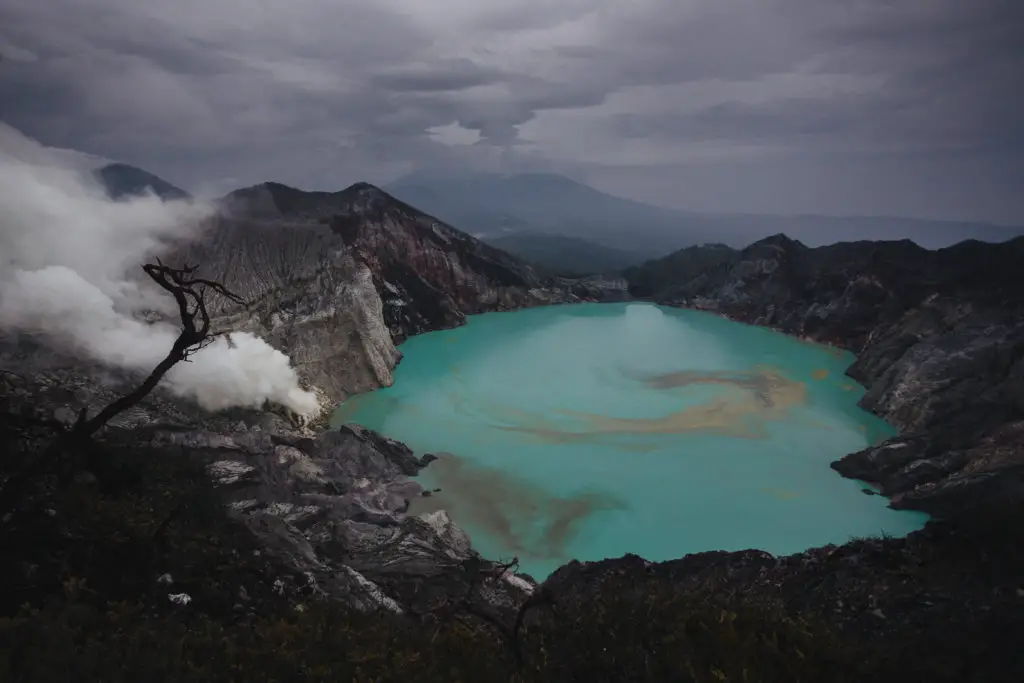
When it comes to otherworldly natural phenomenons, Mt Ijen Volcano provides two for the price of one. And yep, it’s more than just your average volcano puffing away… Not that that wouldn’t already be awesome!
Ijen is located in East Java, Indonesia. This region is a must-do for nature lovers wanting to be impressed since it’s already home to the stunning Mount Bromo National Park and mighty Tumpak Sewu Waterfall.
The first natural wonder Mt Ijen offers is the ‘blue flame.’ While climbing to the top of Ijen for a sunrise view, travellers first ascend to this mysterious phenomenon. The blue fire burns brightly on the mountainside, caused by flammable sulphurous gases igniting as they meet oxygen on the Earth’s surface.
With your gas mask firmly attached, you will see the sulphur miners carrying out their backbreaking work in the dead of night. They descend with 200 pounds of sulfur on their back for just a few dollars of pay.
Next, continue to hike up to the top of Mt Ijen volcano, where you’ll reach a 1km wide crater lake filled with vibrant, turquoise water – the world’s largest highly acidic lake! It is from the rim that many hikers to watch the sunrise.
Giant’s Causeway – Northern Ireland
Contributed by Travel Around Ireland
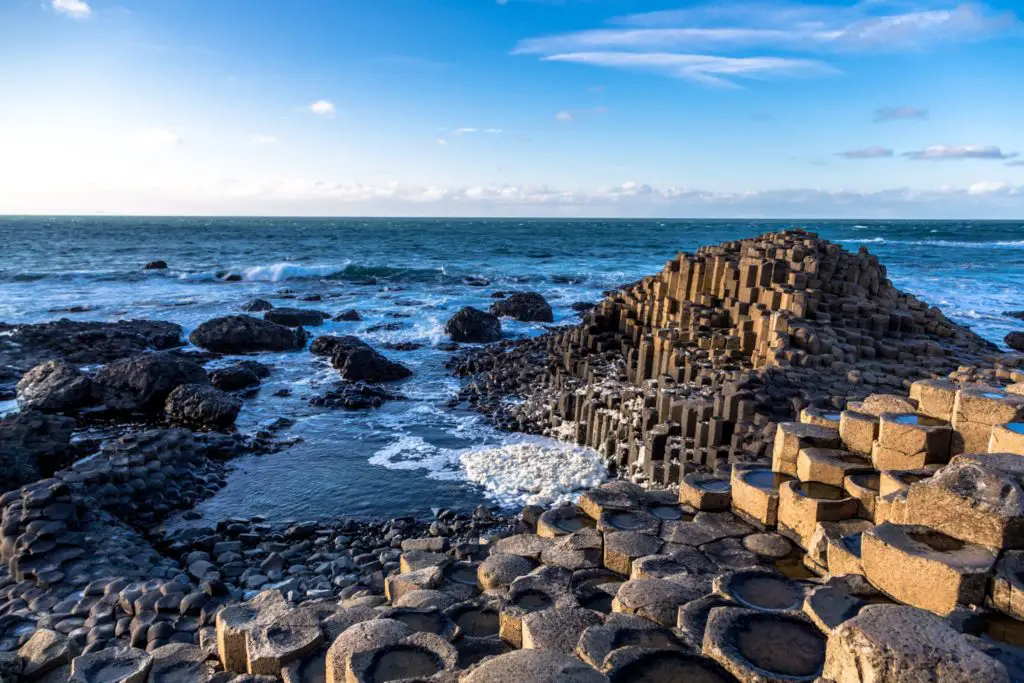
One of the most incredible otherworldly landscapes on the planet has to be the Giant’s Causeway in Northern Ireland. It is an incredible rock formation on the coast and is Northern Ireland’s only UNESCO World Heritage Site.
Legend has it that the Giant’s Causeway was built by an Irish giant, Finn McCool, so he could cross the sea to duel with a Scottish giant, Benandonner. Benandonner pursued Finn back across the Causeway but in turn took fright and tore up the Causeway as he fled back to Scotland, leaving behind what we can see today. There are similar rock formations at Staffa in Scotland.
However, the rocks were in fact formed some 60 million years ago when a thick layer of molten basaltic lava flowed along a valley in the existing chalk beds. When the lava cooled and hardened, it contracted, forming the hexagonal patterns along the crack edges. The columns we see today is the result of erosion over the surface.
The Giant’s Causeway are a natural wonder in Ireland and a must-see. They are located in Antrim, just 3 miles from the town of Bushmills, and are the perfect backdrop for some amazing pictures.
Drumheller – Canada
Contributed by My Backpacker Life
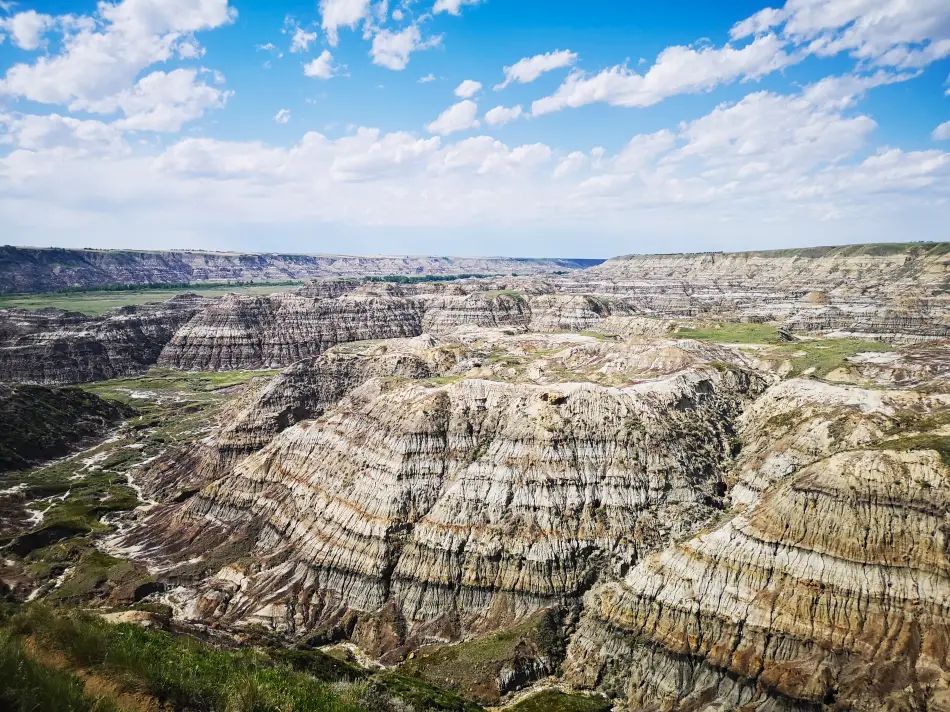
Even though I’ve explored a lot of the world’s second largest country, there’s one place that completely took my breath away – Drumheller.
Drumheller, which is known as the dinosaur capital of the world, is a small town in the Canadian Badlands. It’s close to Calgary in Alberta and would make a perfect day trip. After over an hour of driving, seeing nothing but flatland, you’ll surely be surprised when you arrive in Drumheller.
If you’re interested in history and dinosaurs, there will be a lot for you here to enjoy. Drumheller even claims to have the world’s largest dinosaur. However, if that isn’t for you, don’t worry – the main reason why I fell in love with this town is because of the magical and mystical landscape!
There are several canyons to explore and, with some imagination, you can almost see the dinosaurs walking around inside them. A visit to the Hoodoos Trail is also a must during your time in town. If you don’t know what a hoodoo is you’ll surely find out – they’re something special!
All these canyons and hoodoos are like nothing I’ve ever seen before – Drumheller is definitely something to put on your bucket list.
Bergthorshvoll Ice Caves – Iceland
Contributed by The Magic of Traveling
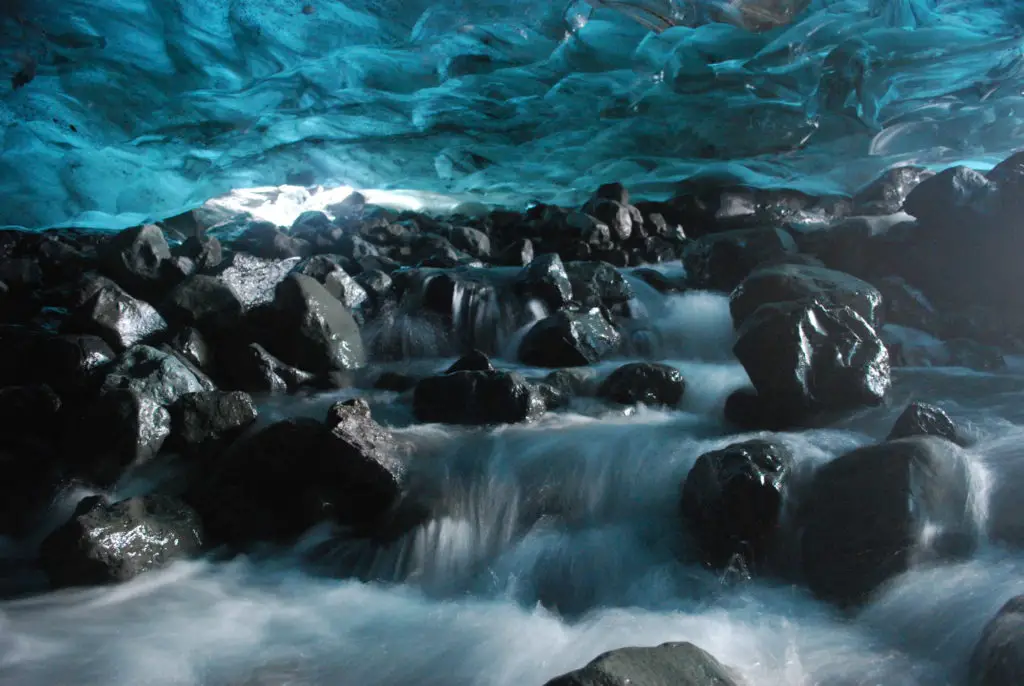
Iceland is full of otherworldly landscapes so you never know if you’re dreaming or you’re actually traveling around this fascinating country. There’s one particular place that totally transported us to another planet though – that place is the Bergthorshvoll ice caves.
Caves have a sort of romantic vibe – sometimes in a bit of a claustrophobic way. You need to be brave enough to hike all the way with crampons and then explore the caves that can be tiny. You may even have to crawl. This adventurous feeling contributes to the out-of-this-world experience.
Ice caves are cool because they can appear and disappear with every new winter and summer. So we were lucky to be in the area of Bergthorshvoll for ice caving with knowledgeable guides who knew which cave can be explored in the safest manner.
Ice caving in Iceland did live up to the expectations. While we struggled to take photos in the narrow sections of the cave, at least we managed to do some high-level yoga poses. Eventually, we took a couple of selfies with our helmets and headlamps and enjoyed the surreal blue magical kingdom.
Chapada Diamantina – Brazil
Contributed by Rest & Recuperation
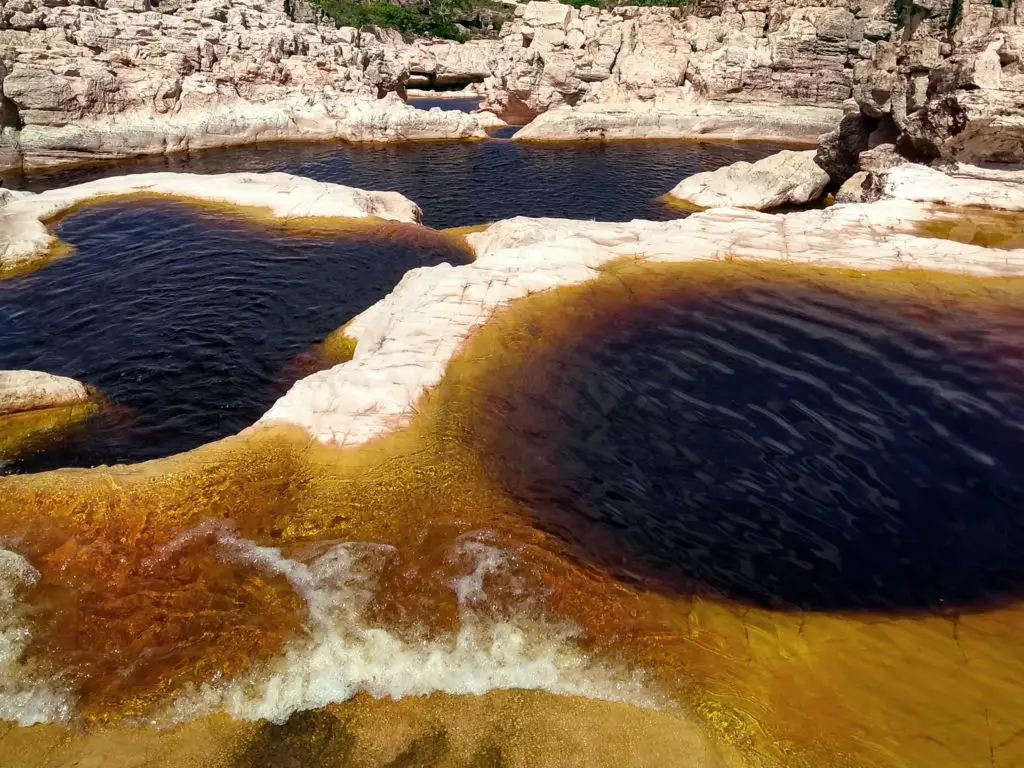
Brazil is such a huge country that has a variety of scenery extending the a continent. Sure enough, it is world renowned for the beautiful beaches and for the gigantic Amazon forest, unfortunately nowadays receding due to human irresponsibility.
During my two months backpacking in the country, I discovered a more secluded place that is still out of the mainstream tourist routes: the Chapada Diamantina.
Located a few hours by bus from Salvador, in the state of Bahia, it consists of a plateau as large as Switzerland. First known for the presence of diamonds, this is where its name originates. After the mining, it became an area of coffee plantations on the side of some inaccessible thick forests. After the end of the farming, a national park was established to protect the environment.
It is the heaven for hikers: there are so many trails and circuits, that you could spend at least two weeks and not see everything. My recommendation is to do at least a four-days trek in the Vale do Pati area, where some of the most stunning views are situated.
And before and after the excursion, do not forget to enjoy the near vibrant town of Lençois!
Huacachina – Peru
Contributed by To & Fro Fam
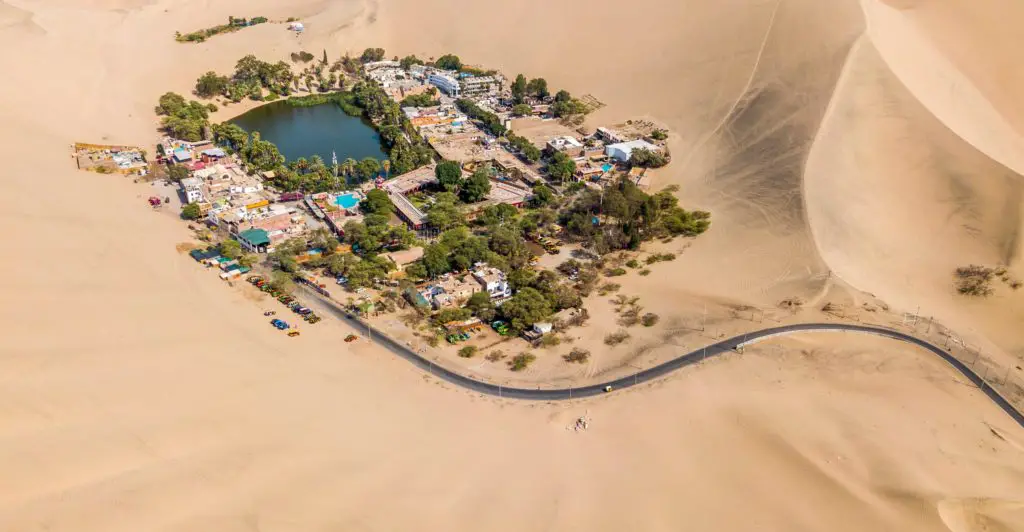
Hidden among sand dunes hundreds of feet high, Huacachina is a tiny desert oasis and town about four hours south of Lima, Peru. Bars, restaurants, hostels and even an itty bitty public library circle the green lagoon, which legend says was formed when a bathing maiden fled a peeping Tom.
The town of Huacachina, which only has 100 permanent residents, is popular among backpackers. The real draw, though, are the towering sand dunes that surround the town and lagoon.
The best way to experience the acres and acres of sand is by dune buggy (called areneros locally). Local entrepreneurs take visitors up the dunes in open-air vehicles, delighting in tourists’ genuine screams as they defy gravity with their high-speed rides.
These tours also include sandboarding. The tour I went on took us to three steep dunes so we could try sandboarding at higher and higher hills. Unless you’re experienced, ride down on your belly, face-first. I volunteered to be the first to try sandboarding in our group, made it safely down, then fell over because I was laughing so hard.
Some people believe the Huacachina lagoon’s water and mud, which come from underground aquifers, have healing properties. Either way, Huacachina, Peru is one otherworldly landscape that should be on your travel bucket list.
Playa Negra – Vieques Island, Puerto Rico
Contributed by Traveling Party of 4
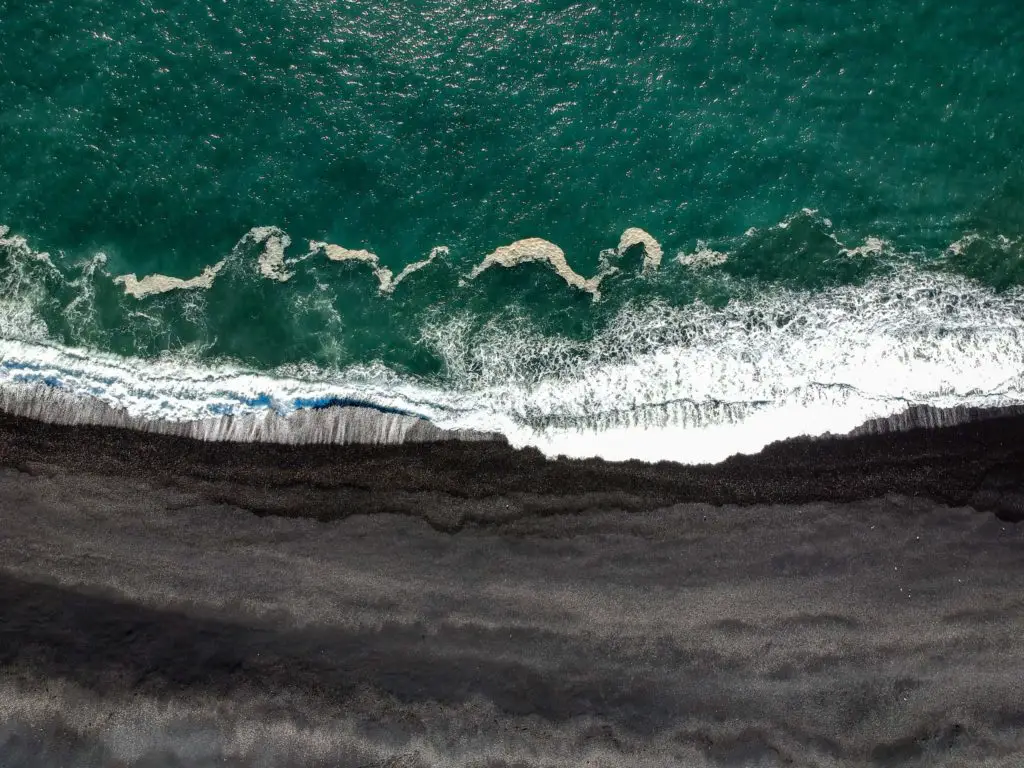
Vieques Island, Puerto Rico, is eight miles east of the mainland, a quick 20-minute flight from San Juan. Perfect for a day trip, but more worthy of settling into one of the laid back resorts and immersing yourself into its beauty.
A unique experience on the island is The Black Sand Beach, “Playa Negra.” Areas of the island of Vieques are volcanic. When it rains, volcanic material washes through the streams and deposits on the beach, creating the stunning Black Sand Beach.
To get there, locate the signs off the main road in Vieques, pointing to the hiking path (which is a stream and can be wet if it has been raining) down to the beach. Park at the trailhead and hike the 15-minute trail that opens up to the dramatic, breathtaking views of Playa Negra.
Once you step foot in the sand, you will see a panoramic view with a dramatic color scheme, blue Caribbean water with foamy white waves, golden sand mixed with black volcanic material, and a backdrop of a rocky cliff. The sand mixture is unusually soft and delicate as it falls through your fingers. Don’t forget your camera so you can document the enchanting views of Playa Negra.
Cappadocia – Turkey
Contributed by Finding Alexx
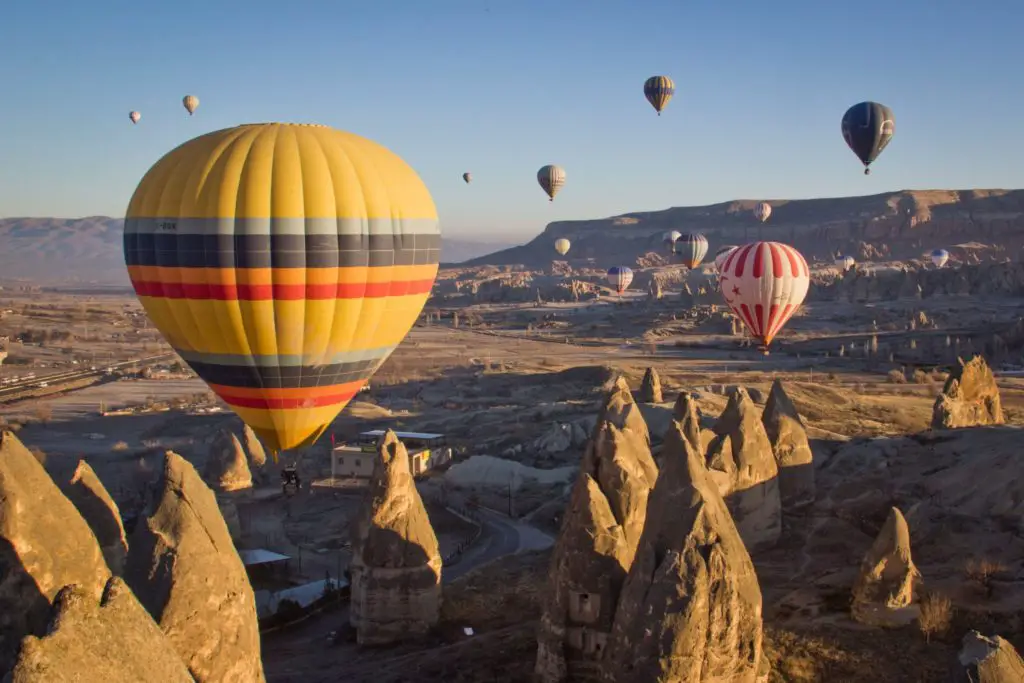
Cappadocia is one of Turkey’s most stunning regions, where jagged fairy chimneys stick out of the ground and hot air balloons float daily over rocky valleys and dusty plains. Take a trek through one of the many hiking trails and you might think you’ve somehow ended up on Mars!
Home to ancient underground cities, churches carved into rocks and an abundance of cave hotels, Cappadocia is a unique must-do for any Turkey itinerary.
The surreal landscape actually came to be after a number of volcanic eruptions millions of years ago that resulted in ash turning into soft rock, easily eroded by the elements and then carved into by Cappdocia’s early inhabitants. They built subterranean networks of tunnels and caves, with entire cities sitting up to 10 storeys below the ground that visitors walk on today.
These days you can get a deeper understanding of life below ground with a visit to Derinkuyu Underground City. You can also see well-preserved frescoes from as early as the 9th century at Goreme Open Air Museum, ride a horse, take a hike or jump on a quad bike to explore the magical canyons. And don’t miss sunrise, where entire valleys change colour as magical balloons fly over them!
Timanfaya National Park – Lanzarote, Spain
Contributed by World of Lina
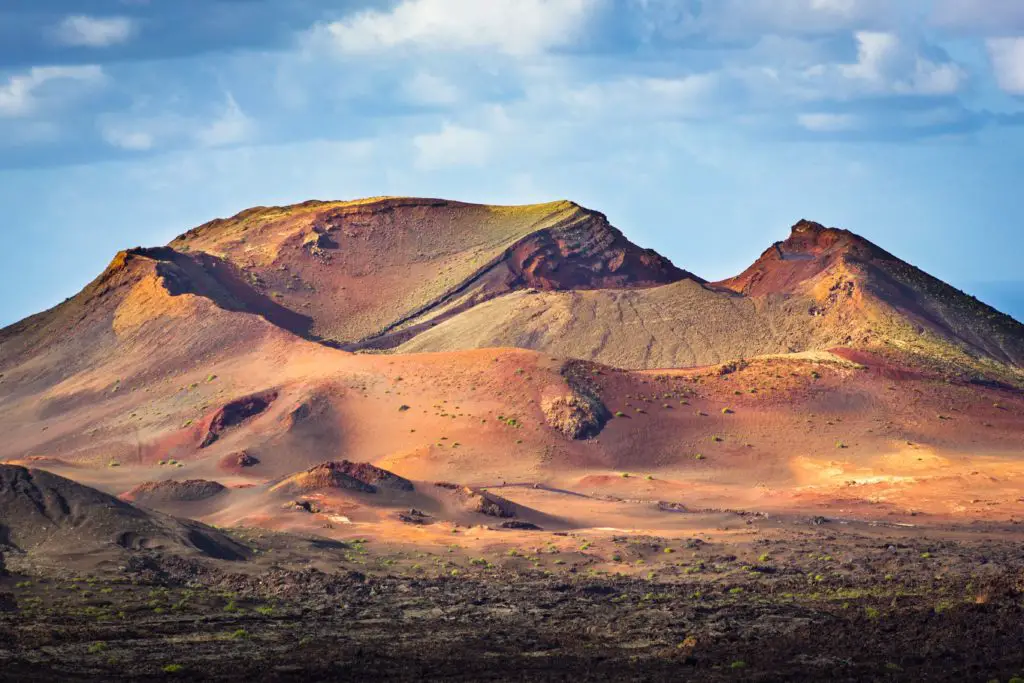
If there’s one place on earth that may look similar to Mars, then it’s probably Timanfaya National Park. This particular area on the Spanish island Lanzarote makes you feel like you just got beamed to a completely different planet. I bet it wouldn’t even surprise you if you met a martian on your way through the national park.
Centuries ago, the island of Lanzarote was created by volcanic eruptions. Timanfaya National Park is the best place to get reminded about that fact because of its strange look from the volcanic soil. Nowadays, there’s only one active volcano called “Timanfaya Volcano”.
To explore the national park, there are two options. The first option is to choose one of the very few footpaths starting from a public car park and walk around the park.
Another way – and the one I recommend – is to take a bus tour. Most of them start from the public car park as well and take you through the park using roads that are usually closed for the public. Close to the car park there’s also a restaurant with a great viewpoint. There you can admire the bizarre landscape of Timanfaya National Park while having lunch.
Artist’s Drive – Death Valley National Park, USA
Contributed by It’s Not About the Miles
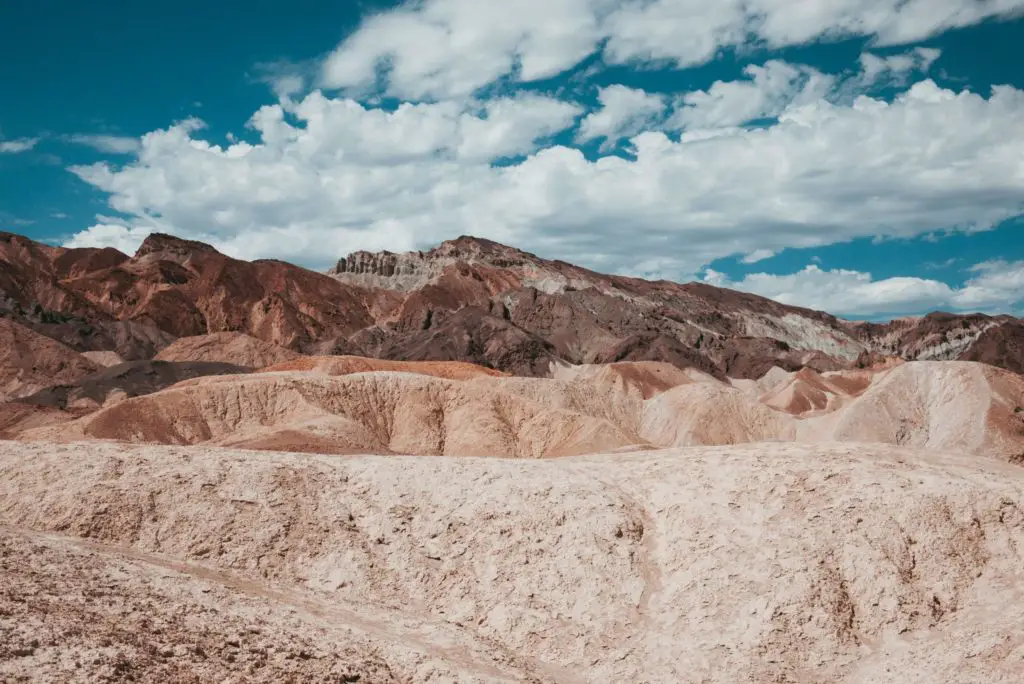
If you are visiting Death Valley National Park in southern California, be sure to do the Artist’s Drive and stop to view the beautiful colors of the rocks at the Artist’s Palette viewpoint. The palette of multi-colored rocks in the Black Mountains is one of the most unique and otherworldly sights you will enjoy in the park.
With colors spanning a wide range from pinks and purples to blues and greens, the mineral deposits of Artist’s Palette were formed by the action of volcanic rocks and hydrothermal systems ages ago. Over time, weathering and erosion led to oxidation of the minerals deposited on the surface, resulting in the hues we see today. For example, the purple colors come from manganese deposits, iron oxides create the yellows and golds, and the greens and blues come from volcanic ash.
The entire 9-mile drive is stunning. As you approach the Artist’s Palette, there is an unmarked pullout, from where you can get great photos of the entire palette of colors from a distance. If you continue, you will come to the signposted turnout, where you can park and walk up close to the rocks. You can even walk on the deposits!
Wai O Tapu Thermal Wonderland – New Zealand
Contributed by CK Travels
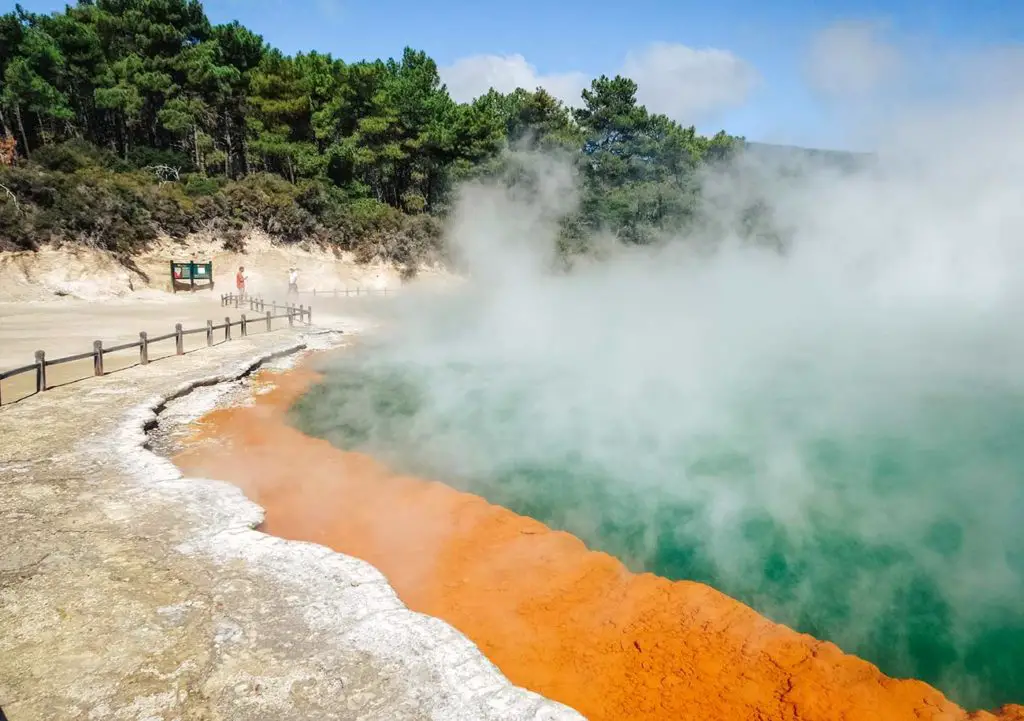
Wai-O-Tapu Thermal Wonderland is a colourful and active geothermal area located in the middle of a volcanic zone in New Zealand’s North Island.
Located a short drive from either Rotorua or Taupo, Wai-O-Tapu is thousands of years in the making. Its unique features include naturally colourful springs, steaming grounds, expansive vistas, huge volcanic craters, spurting geysers and bubbling mud pools. The grounds of the park are nestled within wonderful natural bush and are open to the public everyday for an entrance fee of $32.50 per person.
One of the highlights of Wai-O-Tapu (Māori word for “sacred waters”) is the world famous Champagne Pool with it’s vibrant orange ring created by mineral and silicate interference. The hot and cold pools also dazzle with their bright turquoise blues, sulphuric yellows and neon green hues.
Visitors can enjoy a variety of different walks in the park that range from 30 to 75 minutes in duration and cater for different levels of fitness. The tracks are all sign posted and have well-maintained boardwalks. Visitors will also notice the area has a distinct smell of sulphur which is similar to that of rotting eggs!
Devil’s Throat – Tilcara, Argentina
Contributed by Parenthood4ever
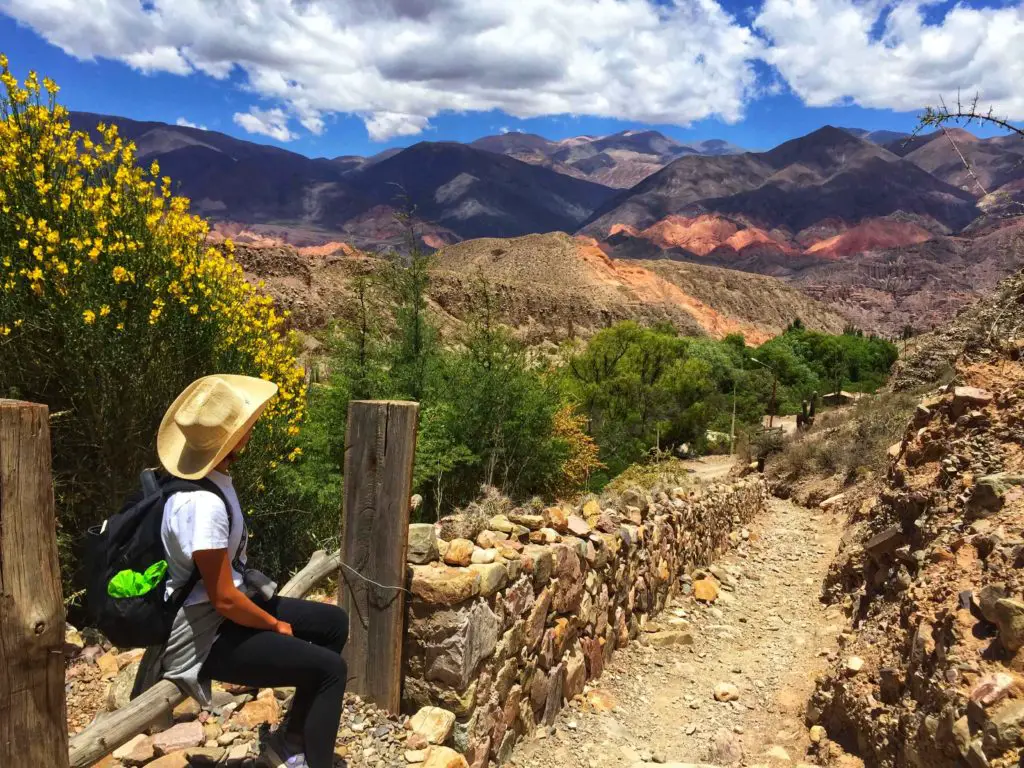
Tilcara is a town in Jujuy province in the northern part of Argentina. Northern Argentina is one of the most well-known parts of the entire South America has the most spectacular views of the Rainbow Mountains.
Humahuaca, Purmamarca, and Tilcara are three main areas you must visit. If you travel from Bolivia, Huamhuaca will be the first one you go to. If you travel up from Buenos Aires, Mendoza or Chile, Tilcara is the one to visit first.
Outside the town are the partially rebuilt remains of the Pucará de Tilcara, a pre-Hispanic hilltop fortification which you can’t miss. But the magical place all the tourists come to Tilcara is located just 20 minutes away from the Pucará.
The Devil’s Throat, or Camino a la Garganta del Diablo (don’t mix it with Iguazu Falls), is steep gorges fully covered with Rainbow Mountain range that creates incredibly unforgettable views.
It is a 7 km hike to the Devil’s Throat and it’s well-protected by the local community. You’ll be wandering numerous trails, passing by the mystical well, getting down to the huge canyon, and ending up at the waterfall where you actually are allowed to swim too.
Pink Lake – Oman
Contributed by Oman Travel Guides
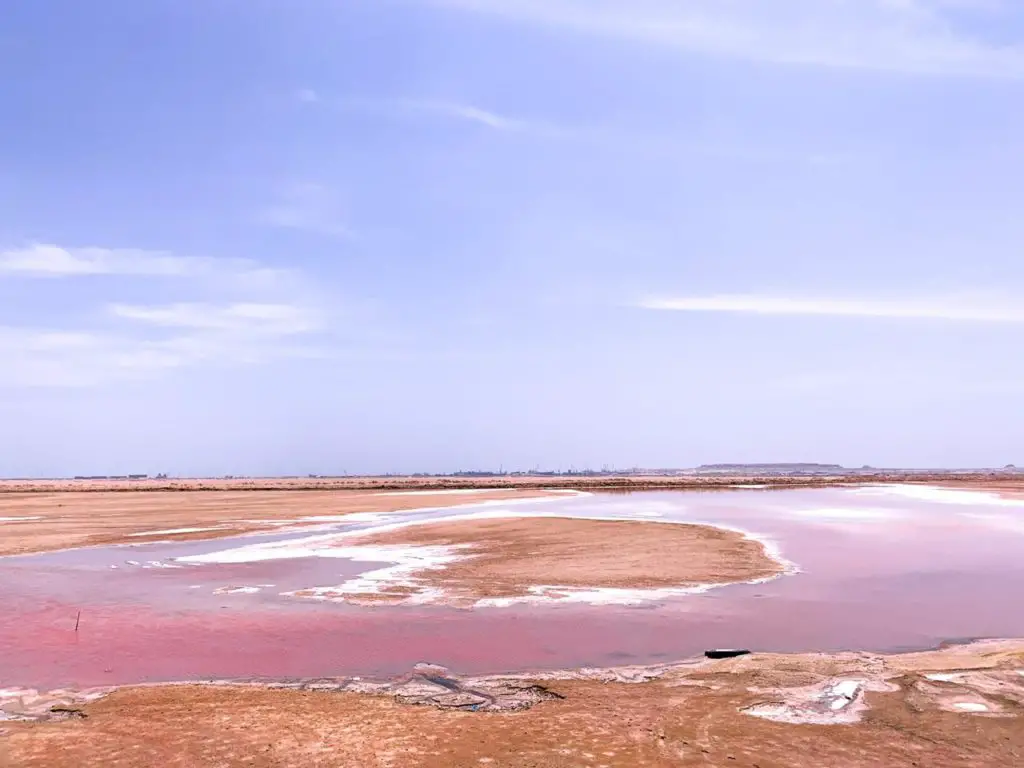
Oman is full of diverse landscapes and natural habitats. From its vast mountain ranges to the endless desert, there are many things to see in this beautiful country. One of its many rare sights is its pink lakes.
There are two distinct locations in Oman that offer access to such a view. One is located in Jalan Bai Bu Ali, Al Ashkharah, South Al Sharqiyah, while the other is in Al Jazir in the Al Wusta Governorate.
I recommend that you visit the Pink Lake in Jalan Bai Bu Ali, as it is a more captivating location and there are many things to do at this destination. Other than admiring the color of the lake, you can also camp or hike along the waters and visit the many archaeological sites nearby. If you are lucky, you may find a pink flamingo or two relaxing in the lake!
According to a research project by students at the Sultan Qaboos University, the lake’s pink water is a result of Dunalielia Salina, a type of algae that lives in the water. Did you know that there are only a handful of pink lakes around the world? As such, this destination is not to be missed!
The Pinnacles – Western Australia
Contributed by Wanderfully Living
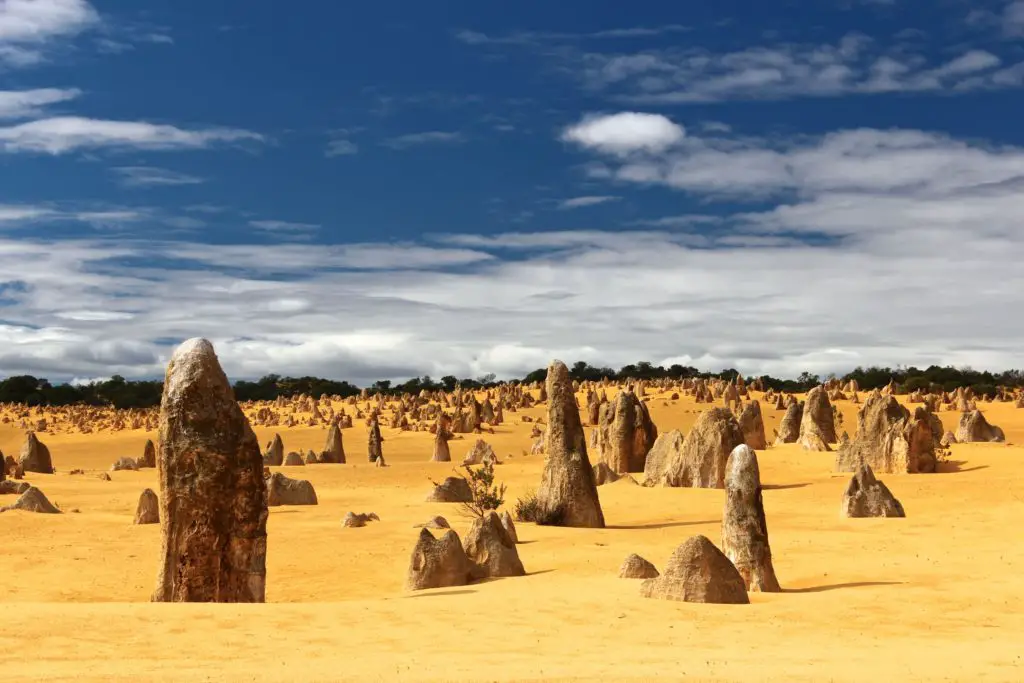
200km North of Perth in the Nambung National Park lies one of the most peculiar landscapes in Western Australia. Thousands upon thousands of sharp protrusions of rock shooting up from the ground like bizarre stone cacti, some as tall as 5 metres.
These rocks are called ‘The Pinnacles’ and no one knows exactly how they came to be. In fact, there are at least 3 conflicting theories as to the formation of these rocks. One theory suggests they were formed as a result of karstification. Another theory claims that they were formed through the preservation of tree casts buried in seashells which were eventually worn down to limestone and another theory states the pinnacles were made by plants.
In 1650 when Dutch explorers reached this part of Western Australia, they thought at first that these incredible spires were the remainder of some ancient city.
This landscape is always changing as the sand dunes shapeshift with the wind, burying some smaller pinnacles and then revealing others as the wind changes direction.
The aboriginal people of the area, known as the Nyoongar have many superstitions about The Pinnacles. It is said that they avoid The Pinnacles as they believe that the standing rocks are fossilised ghosts!
However these rocks were formed, everyone can agree they are extremely unique and a must-see on a road-trip through Australia’s north west.
Ice Sheet – Greenland
Contributed by Yonderlust Ramblings
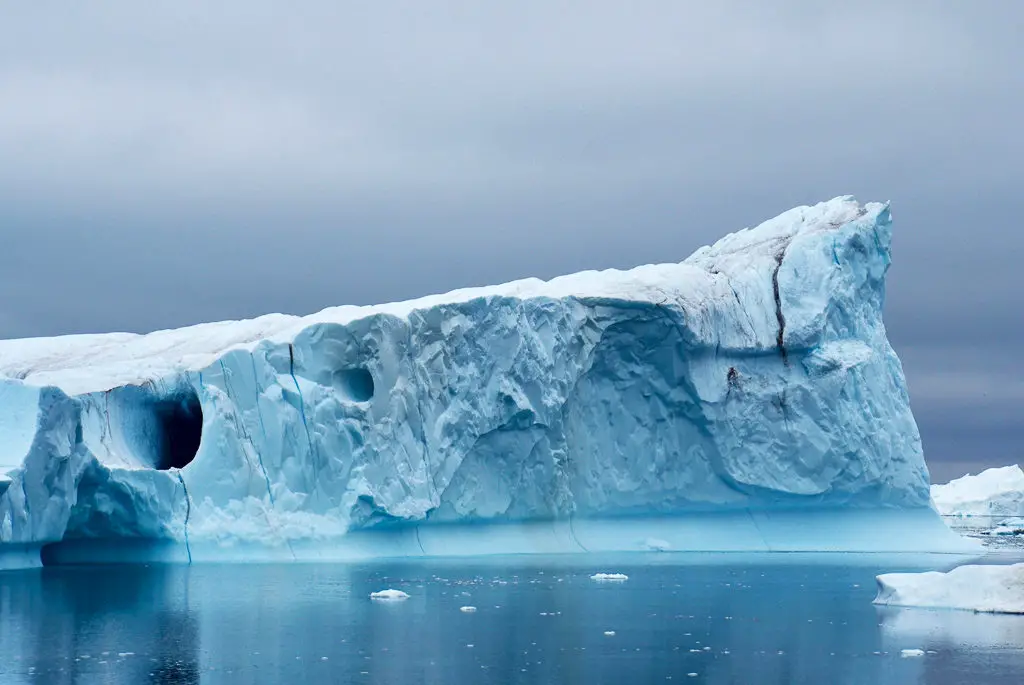
One of the most unbelievable and incomprehensible sights on this planet is the Greenland Ice Sheet, the 2nd largest ice sheet in the world! This stark monolith is a surreal blend of breathtaking, formidable, and otherworldly.
The Greenland Ice Sheet is located in the southwestern portion of the country, near the town of Kangerlussuaq. There are many amazing things to do during a visit to Kangerlussuaq, but the highlight has to be a trip to the Ice Sheet! It is easy to secure a local guided tour in Kangerlussuaq, which will transport you directly there.
The Greenland Ice Sheet covers approximately 650,000 square miles, and was formed due to falling snow in the winter not fully melting over the summer months. While the Ice Sheet may look inanimate, it’s a constantly shifting, morphing and living body!
A trip to the Ice Sheet not only rewards with one-of-a-kind scenery, but visitors can actually walk on it. This is guaranteed to be one of the most mesmerising walks of your life, as you witness unending ivory horizons, chiselled ice chunks, frozen underground bubbles, and billowy snow piles and snow drifts.
Kyzylkum Desert – Central Asia
Contributed by Dukes Avenue
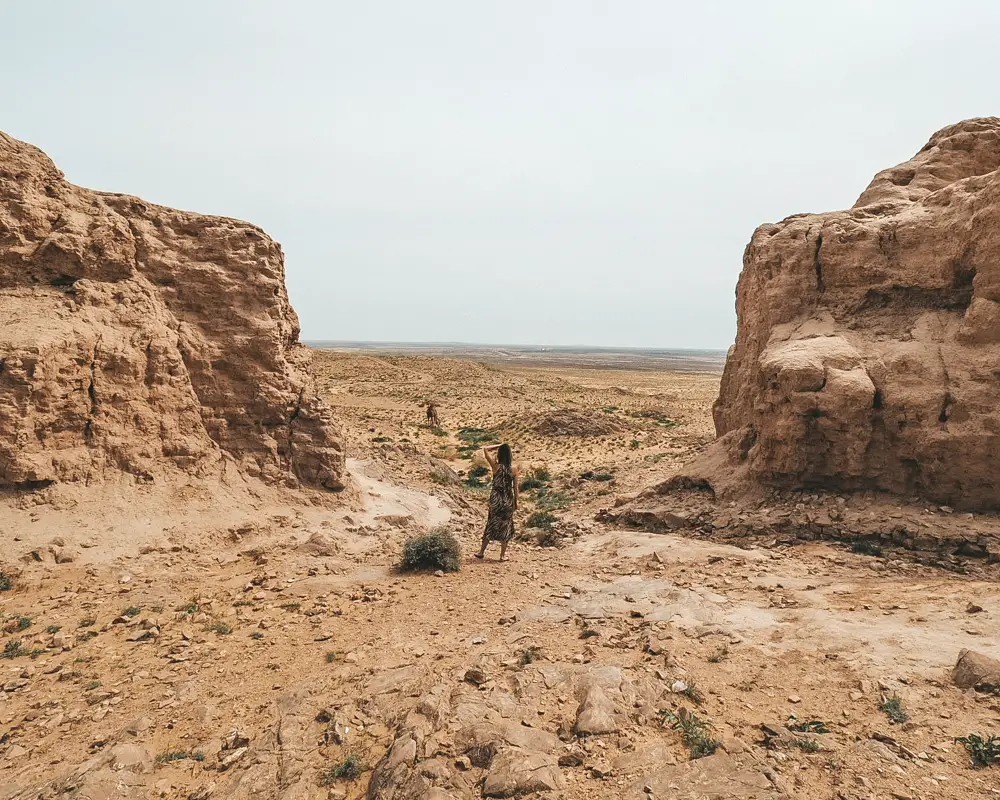
It is quite unbelievable that the Kyzylkum Desert in Central Asia, a vast space covering 298,000 km2 (about the size of Arizona) across Uzbekistan, Kazakhstan and Turkmenistan, remains relatively unknown to outsiders. The natural and desolate landscape is covered in sand dunes and rock formations with the odd oasis, and is home to antelopes, black-tailed gazelle and camels, as well as the livestock that hardy locals put out to graze.
We were lucky enough to experience this incredible landscape during our 10-day trip to Uzbekistan. Located a couple of hours drive outside of Urgench, visitors can explore a number of ancient fortresses that secured the old trade routes which snaked across the landscape, with many of them having been restored, and each is a sight to behold.
Ayaz Kala, arguably the most spectacular fortress is completely empty, save for a few roaming camels, and offers amazing views of the vast Kyzylkum Desert.
In a nearby encampment, locals serve typical Uzbek fare like plov, bread and lamb stew inside traditional yurts to weary tourists. This is the perfect spot for some great pictures as a memento of your time in unforgettable Uzbekistan.
Mount Kinabalu – Borneo, Malaysia
Contributed by PlacesofJuma
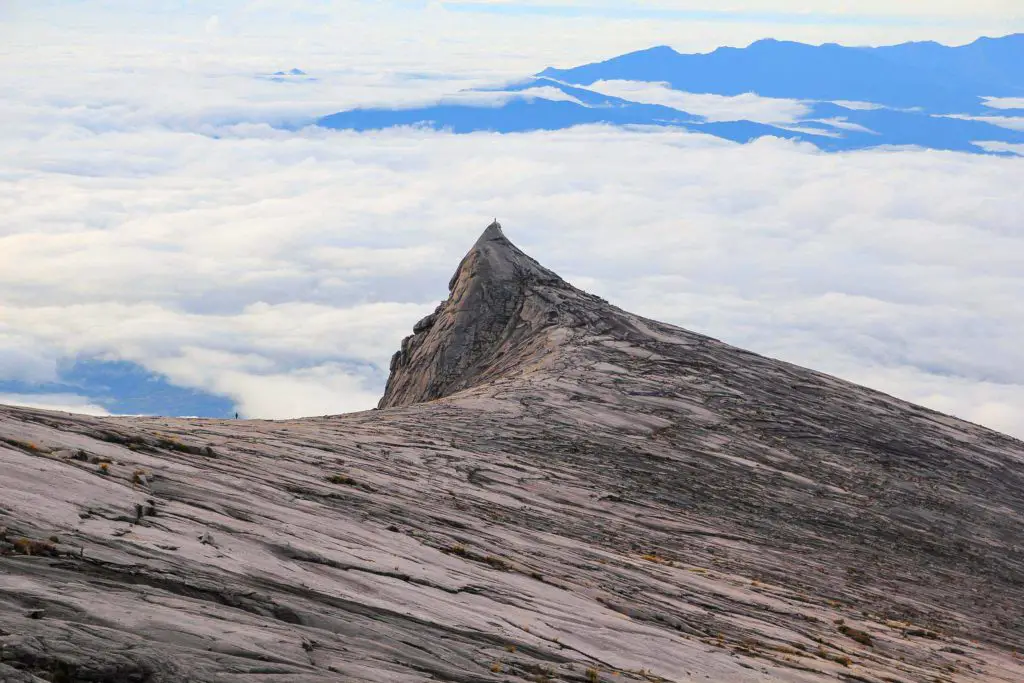
One of the most stunning places we have ever been is to Mount Kinabalu in Borneo (Malaysia). This spectacular mountain is the landmark of Sabah and with a height of 4,095 meters, the highest mountain in all Southeast Asia.
Since 2000, Mount Kinabalu is added to the UNESCO World Heritage List and visitors from all over the world come to experience these incredible mountainous landscapes.
Also for us the climb on this unique mountain was a really special experience. If you are quite fit, you should definitely put that activity on your Borneo bucket list. For getting there, you will have to book a 2-days guided tour, with overnight stay in a base camp.
While hiking, you will pass many different landscapes, starting from the deep lush jungle with carnivorous plants and ending up at the rocky top of the mountain where you can enjoy the most incredible mountain views.
Due to its unique look, many think the mountain is a volcano. But in fact, it is a huge granite rock which forms a picturesque and world-unique panorama.
Chocolate Hills – Bohol, The Philippines
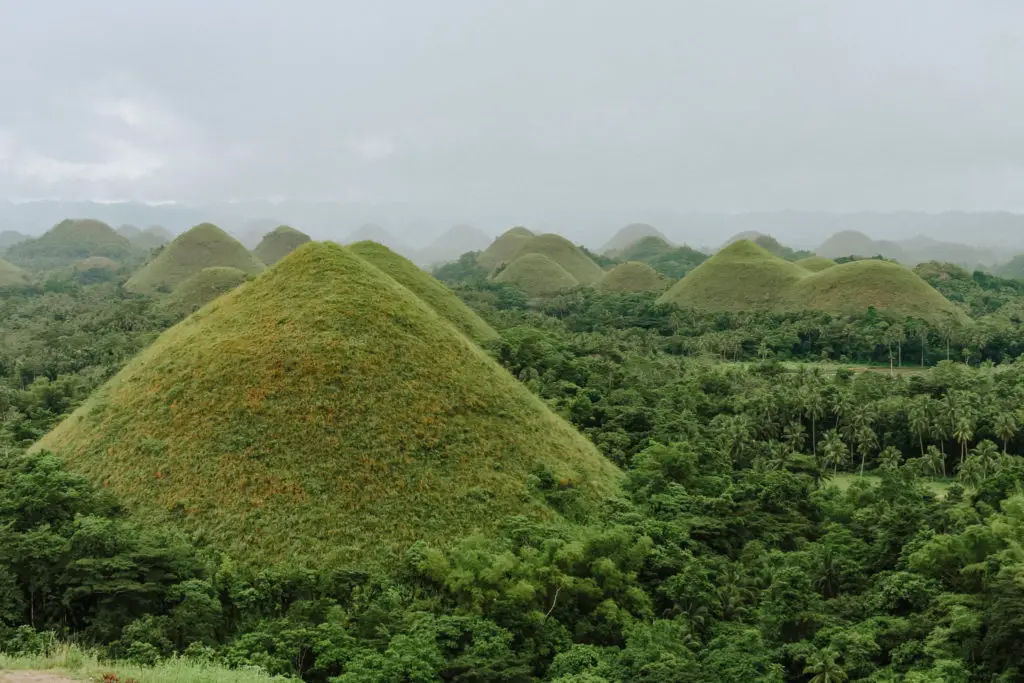
The Chocolate Hills are a strange natural phenomenon located in the Bohol province of the Philippines. For as far as the eye can see, there are over 1,000 perfectly shaped cone hills protruding from the palm trees and thick of the jungle.
The hills get their rather unusual name from when the grass on the mounds burn in the hot summer months, and consequently turn brown.
There are a few debates about how the karst mounds were actually formed. The most common scientific explanation is that they have been dissolved by rainfall, and surface water and eroded by rivers and streams after they had been lifted above sea level and fractured by tectonic movements.
Some more imaginative legends suggest that they are the remnants of a physical fight between two giants. When the giants made up after their feud, they simply left the rocks and boulders they threw at each other behind, forming the Chocolate Hills.
The Chocolate Hills are one of the most interesting natural wonders to see in the area. The geological formations can be viewed via two lookout points (accessed by many steps) or up close by driving an ATV around them. It’s an extraordinary site and doesn’t quite seem real… in this world at least.
Salar De Uyuni – Bolivia
Contributed by Career Gappers
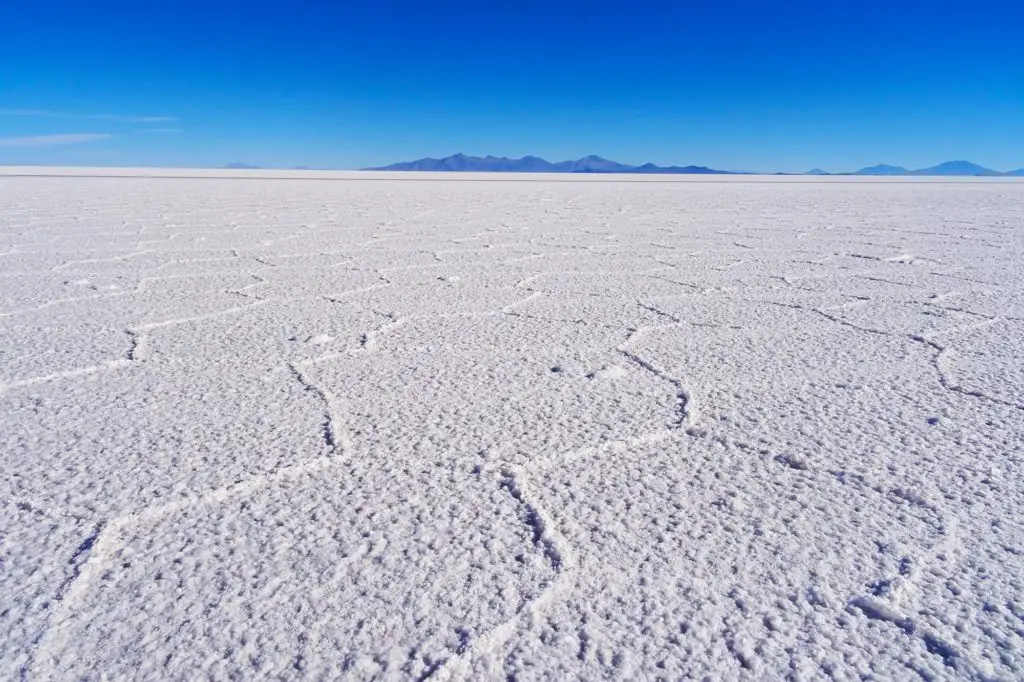
The world’s largest salt flat, Salar de Uyuni, covers a vast expanse of more than 10,000 square kilometres in south-west Bolivia. Its unusual vistas of a white salt desert stretching to the horizon in every direction, is so unearthly that it was chosen as the setting for Planet Crait in Star Wars Episode VIII, The Last Jedi.
Salar de Uyuni was created by the evaporation of a giant prehistoric saltwater lake over thousands of years of slowly rising temperatures. The density of salt in the water reduced into the crusty surface of hexagonal patterns that characterises the flats today.
From the local city of Uyuni (hence the name), you can take a journey deep into the salt flats to see this unique phenomenon of nature. Tours into the salt flats range from day trips through to several days and nights of exploration. They include other nearby natural landmarks such as Fish Island (a cactus-ridden rocky outcrop amid the desert), the red lagoon of Laguna Colorada, the ancient rock formation of Árbol de Piedra, and the volcanoes of Licancabur and Ollagüe. There are endless unique landscapes and adventurous activities you can do in Bolivia to experience them.
While you’re on the salt flats, don’t forget to try the famous false perspective photos made possible by this bizarre landscape.
Limestone Pavement – Malham, UK
Contributed by Get Lost Blog
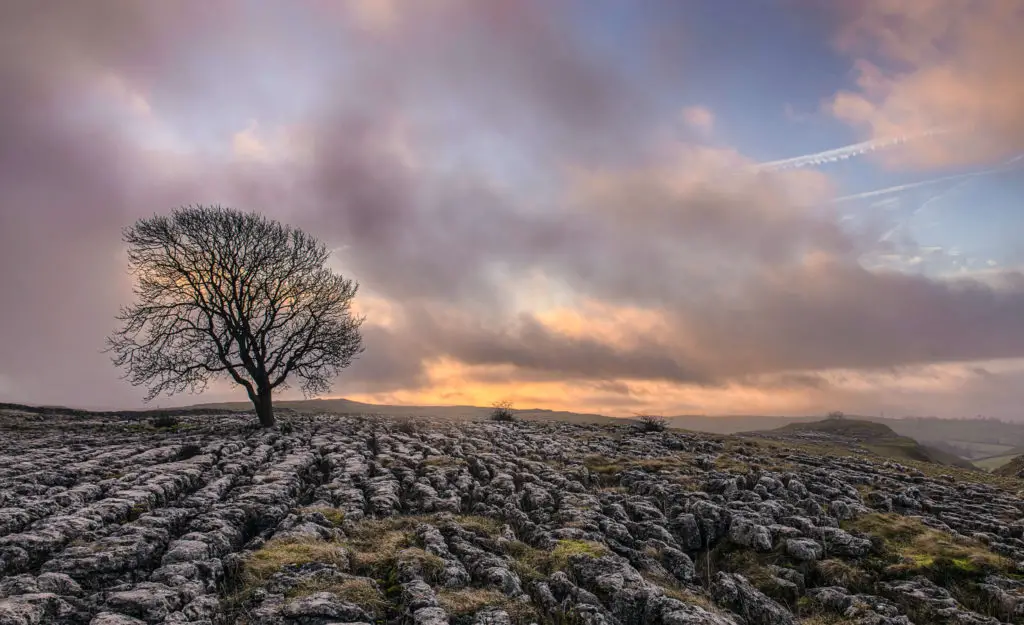
The Yorkshire Dales National Park in the North of England is renowned for its unspoiled landscape of rolling hills and rugged terrain. The park spans over 840 square miles and, in most locations, you’d be lucky to get any phone reception. It is the ideal place to escape and live a life at a slower pace.
The village of Malham is located towards the south of the National Park and it boasts one of the most dramatic and otherworldly landscapes in England. Malham Cove is a large limestone formation that was formed by a waterfall carrying meltwater from glaciers at the end of the last Ice Age more than 12,000 years ago. You’ll need to climb up 400 irregular stone steps at the side of this 80-metre cliff face to take in the spectacular limestone pavement.
This bizarre, scarred landscape is made up of a series of limestone rocks with deep caverns between them, also formed by glaciers during the Ice Age. You can teeter your way across the pavement, hopping from stone to stone and appreciate the contrasting greenery of the surrounding landscape. This limestone pavement may look vaguely familiar however, most famously, it can be spotted in Harry Potter and the Deathly Hallows.
Antarctica
Contributed by The Directionally Challenged Traveler
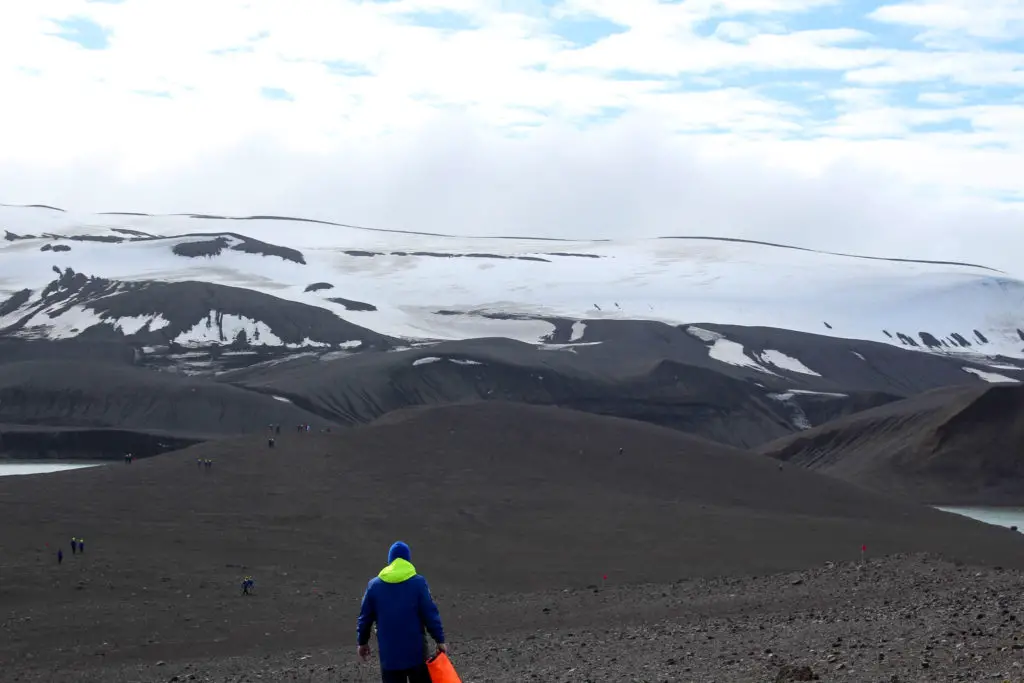
Antarctica is one of the most remote destinations in the world. With only 40,000 visitors in a year, the untouched landscape is pristine.
Since Antarctica is a protected continent – countries can have bases, but they do not own it. The Antarctic Treaty System protects the land from human impact – meaning there are no hotels, no restaurants, no cars.
The journey to the ice continent is as temperamental as mother nature herself – the Drake Passage can be mild (10 foot swells) or extreme (30 foot swells) – but either way it’s worth the motion sickness! The journey makes the destination even better!
Visiting Antarctica will help you realize how small humans are in comparison to the world itself. Walking along miles of iceberg-coated beaches, lined not with umbrellas, but with penguins and seals, brings a new appreciation of life.
Antarctica is more than just sea-ice, glaciers, and snow though. Hiking a sunken volcano with no one else around made me feel like I was one of the first people exploring a new planet.
Pamukkale – Turkey
Contributed by Our City Travels
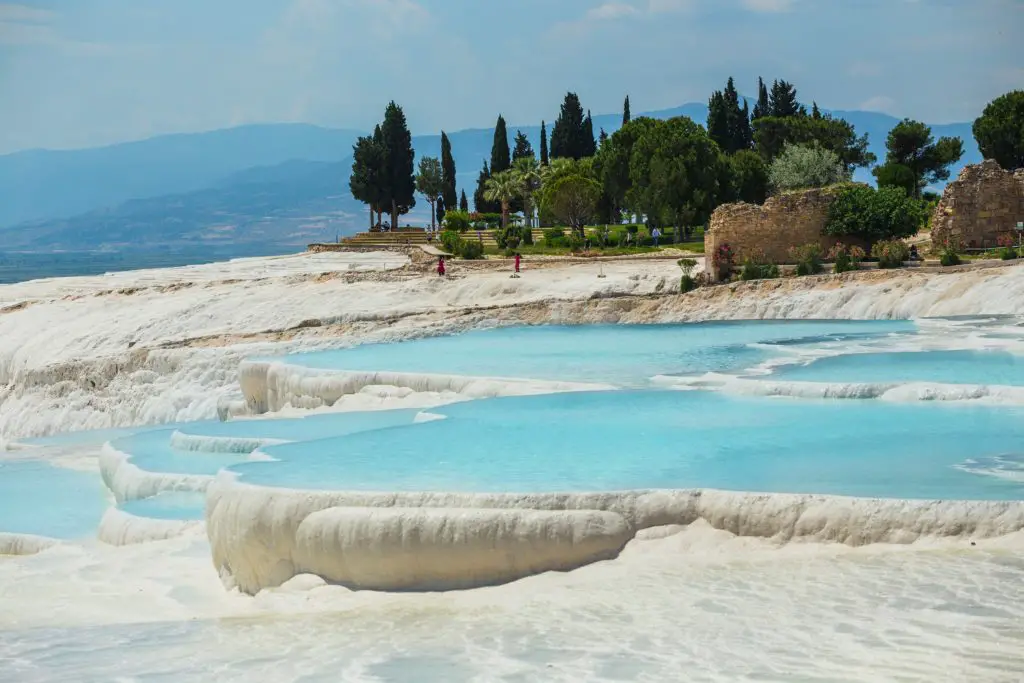
Travertine terraces are some of the most bizarre yet magnificent-looking geological formations on earth. There are a number of them around the world, but Pamukkale intertwined with Hierapolis in southwestern Turkey named a World Heritage Site in 1988, stands out.
‘Cotton Castle’ (‘pamuk’ means ‘cotton’ in Turkish) as it is translated to English, Pamukkale’s picturesque gleaming white calcite travertines overflowing with warm, mineral-rich waters is a must-see!
The water coming down to the springs contains calcium hydro carbonate. There have been tectonic movements triggering small earthquakes in the area that gave rise to a number of very hot springs. The water from these springs created Pamukkale with its large mineral content. When the hot water gets in touch with carbon dioxide, it starts to lose the warmth and then carbon dioxide and carbon monoxide are released in to the air. As a result, the calcium carbonate is precipitated and the water turns everything it touches to white.
You can enjoy Pamukkale’s healing benefits when you take a bath in allowed areas. Its thermal springs are between 35 and 100 degrees Celsius and rich in calcium, magnesium sulfate and bicarbonate. All these minerals are attributed to its healing properties since 197 BC up to this day.
Volcanic beaches – Lanzarote
Contributed by Trip Trip Now
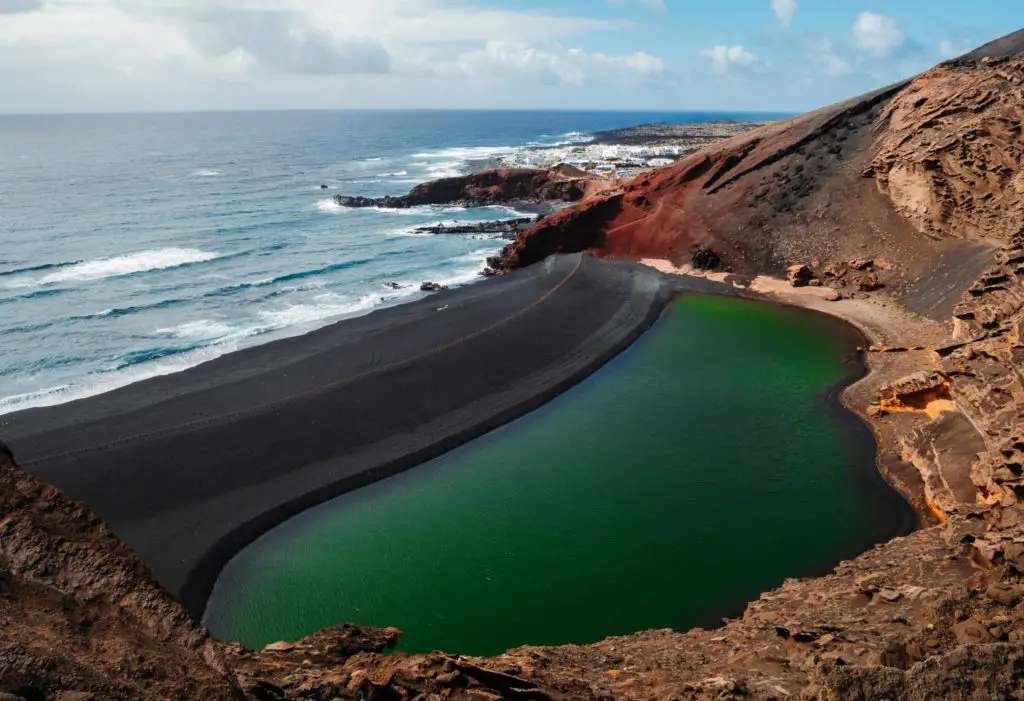
Lanzarote was one of the biggest travel surprises we ever had. Although curious to know the island where Nobel writer José Saramago had settled, we hadn’t really planned to go there when we landed in Fuerteventura, another of the Canary Islands with breathtaking landscapes.
As far as we knew, Lanzarote had the Timanfaya volcano as its big attraction, so we hadn’t given a thought about how beaches there would be or if we could enjoy them. However, the moment we got in Lanzarote, we felt immediately transported to another planet.
The volcanic landscape also extends to many of its beaches, painting rocks and sand with the darkest black. Our first stop, yet around Timanfaya National Park, was Los Hervideros. Imagine the lava of an erupting volcano reaching the sea (this happened for the last time in 1736). Fast-forward it a couple of centuries. Then you have this particular coastal landscape with submarine caves and funny morphological puzzles. From above you observe the violence of waves and get a bit mesmerized by the whole masterpiece.
To sunbathe we headed to Playa Quemada and Playa La Arena, where the blue sea gets an interesting contrast with dark pebbles, sand and rocks. These are very calm beaches with a few tourists and a strange yet peaceful atmosphere.
Virgin Gorda Boulders – British Virgin Islands
Contributed by Gluten Free Horizons
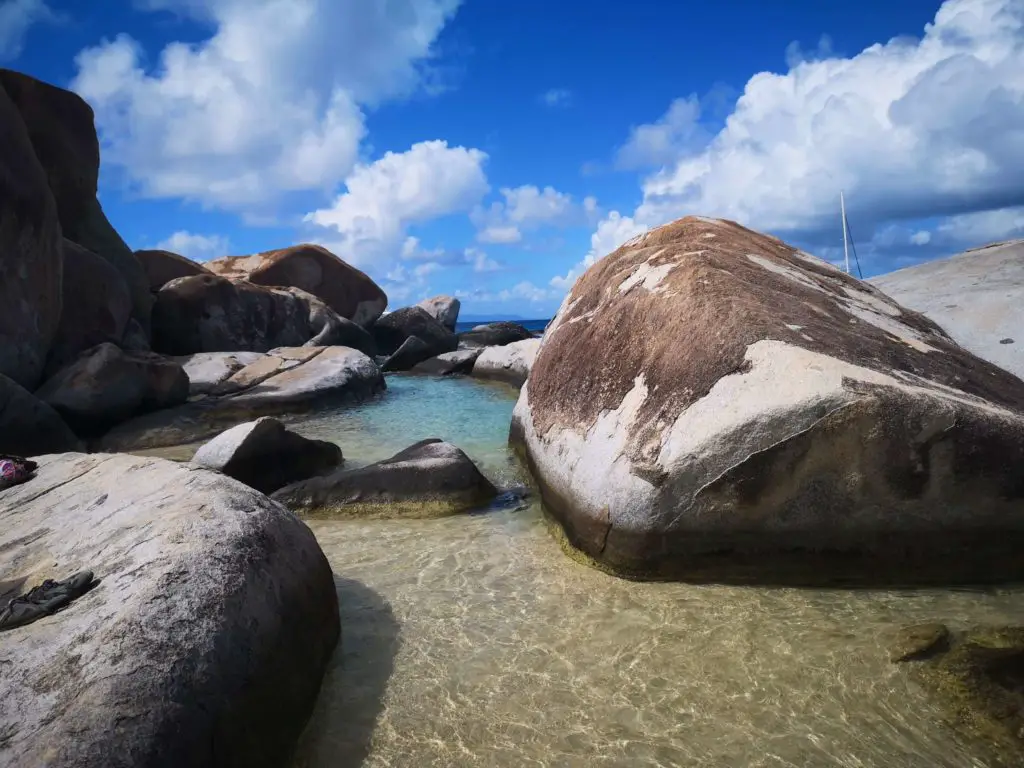
The boulders dotted along the coastline at Southern tip of Virgin Gorda make for an astonishing site – from a distance away their size is almost hard to determine – only once you reach the Baths do you realise just how huge they are!
Though it would appear as those they’ve been placed around the beaches by giant, cosmic hands, they’ve truly been formed by huge chunks of granite that have been eroded over time into mammoth piles of boulders.
As well as piles framing some secluded beaches, the boulders also form some incredible tunnels and arches that you can clamber through. Be warned – it’s quite the scramble. Be ready to duck, crawl and get your feet wet. I’d recommend taking some water shoes with you – flip flops aren’t going to cut it for this beach visit. It really is an adventure though, and there’s a little beach bar at the end of your path!
Its also worth taking your snorkelling gear – there’s some amazing reefs if you swim out from the beach at the Baths. Take your GoPro and get ready to snap some video of parrotfish, angelfish and even rays gliding amongst the coral.
Altyn Emel National Park – Kazakhstan
Contributed by Backpack Adventures
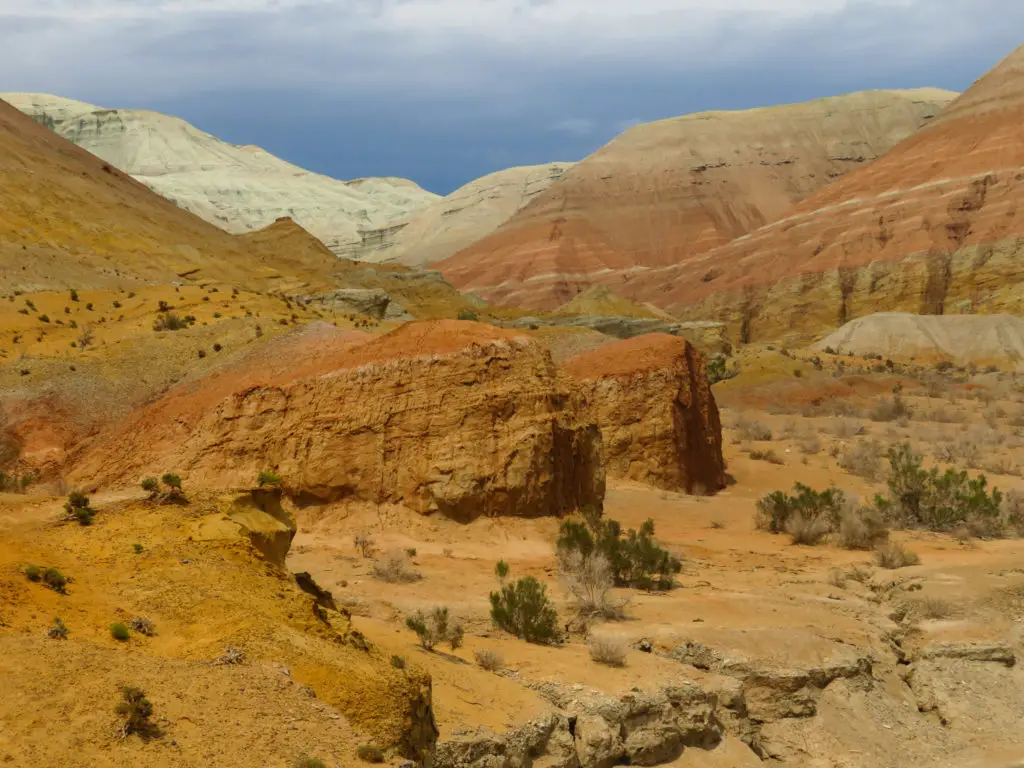
You might think Kazakhstan is nothing but steppes, but this is far from the truth. Altyn Emel National Park is proof of the country’s diversity in nature; from singing sand dunes, volcanic mountains to ancient burial mounds at the shores of lake Kapchagay.
Altyn Emel National Park is a geological wonder that offers otherworldly landscapes that are breathtakingly beautiful. You wonder whether you are still on earth. It’s where the vast steppes meet strange and colourful mountain ranges.
The singing sand dunes are the most famous attraction because of the strange humming sound you hear if the conditions are right. However, there is much more to explore. The volcanic red rock formations at the Katutau mountains make you feel like you are in Mars and the Aktau mountains are an explosion of colours.
If you are lucky you might be able to spot some of its wildlife as well. Wild horses or Persian gazelles as well as lots of birds. If you ever make it to Kazakhstan, don’t miss Altyn Emel National Park.
La Cuidad Encantada – Spain
Contributed by At Lifestyle Crossroads
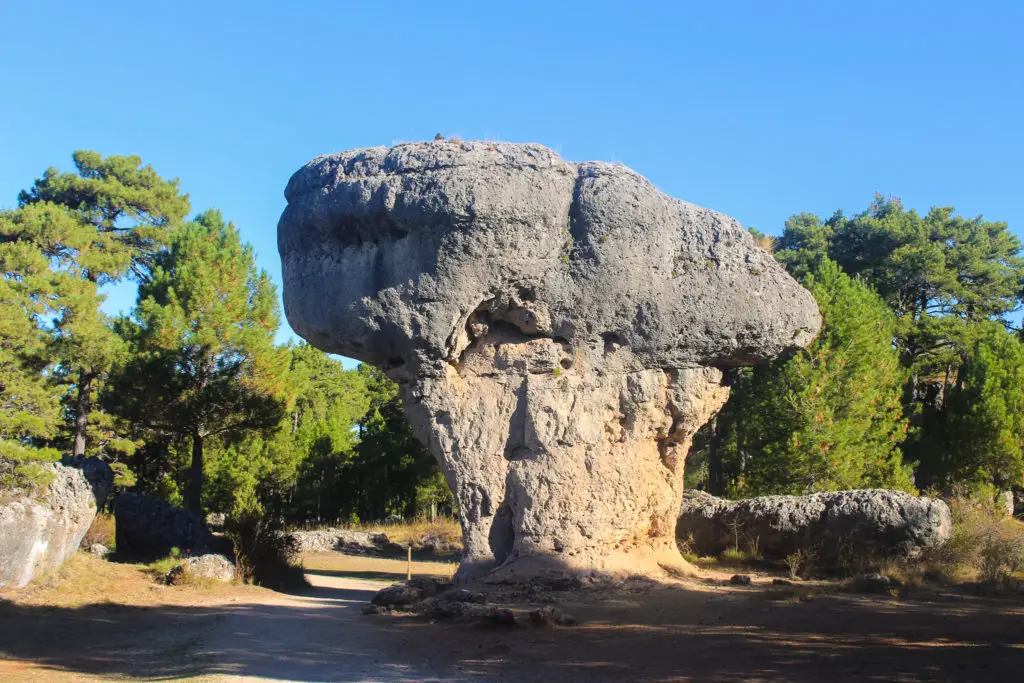
The Enchanted City (or “La Cuidad Encantada” in Spanish) is a magical forest full of stunning rock formations, located 28 km far from the city of Cuenca in Spain.
By and large, The Enchanted City of Cuenca is a circular walking route (3 km long) full of impressive rock formations, sculpted over the centuries by ice, wind, and water. This is the place where you let go of normal directed thinking and liberate your imagination.
All the other-worldly rock formations go by their unique names. You can find anything from the fight between an elephant and a crocodile, to the giant mushroom rocks.
Although The Spanish Province of Cuenca borders with a few well-known regions, like Madrid, Toledo, and Valencia, it is still Spain off-the-beaten-track. Therefore, you´ll need a car to reach The Enchanted City of Cuenca. Alternatively, you can get to the region´s capital city of Cuenca by train from both Valencia and Madrid. Afterwards, rent a car or take a taxi to The Enchanted City of Cuenca. The drive will take you around 40 minutes.
Havasu Falls – Arizona, USA
Contributed by She Dreams of Alpine
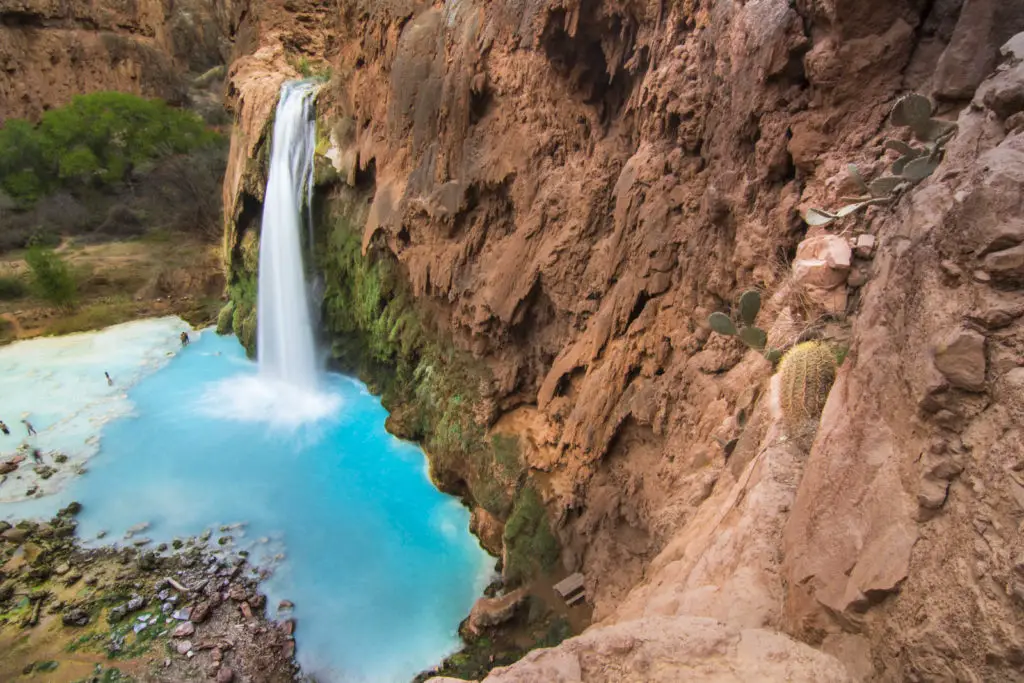
Havasu Falls is one of the most beautiful and unique places to explore in the United States, which is why it makes the top of the list for otherworldly landscapes on the planet. The rugged beauty of the desert landscape in Arizona mixed with the beautiful turquoise-blue waterfalls make it a dream location..
The blue-green waters of the Havasu Falls area get their color from minerals like magnesium, calcium and suspended calcium carbonate found in Havasu Creek. They reflect the sunlight to create this unique turquoise color that hikers and travelers from all over the world come to see.
However, it’s very competitive to get hiking permits to visit Havasu Falls, so be sure to plan well in advance. The hike is roughly 25 miles long round trip if you hike all the way down to Beaver Falls which is the final waterfall of 5 total on the hike, and you should plan to spend 3 days doing this hike. The hiking is relatively easy, but there are some tricky sections to the trail. The effort is worth it though!
All 5 of the waterfalls along the trail are absolutely breathtaking and like nothing else you can see in the United States. It’s worth the trouble if you’re able to snag a coveted permit!
Contributed by Darek and Gosia
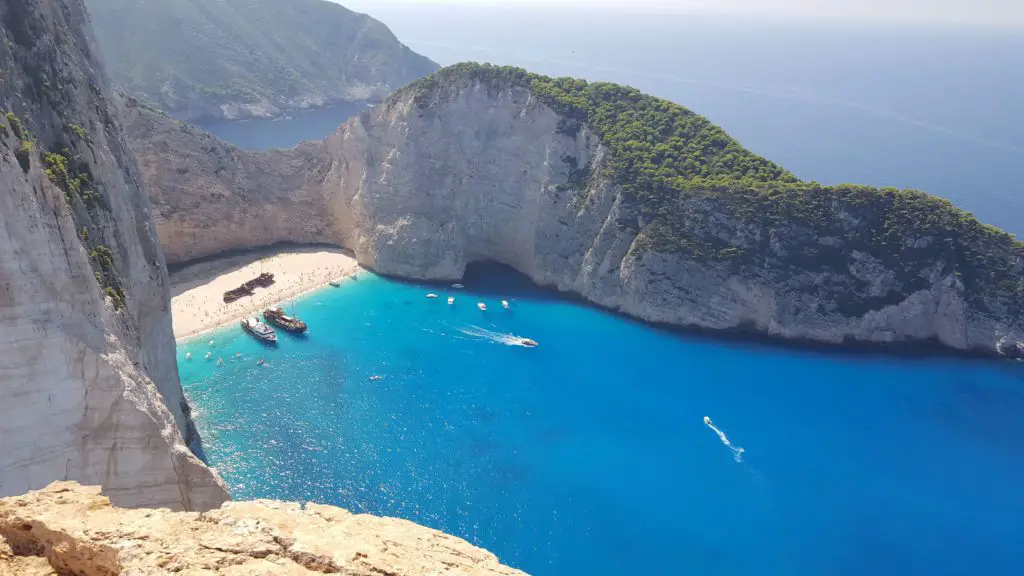
If you are looking for the most incredible landscape and view in the world you have to visit Navagio Beach in Zakynthos!
The Wreck Bay (Navagio) owes its fame to the crystal-clear water and the paradise beach hidden at the foot of a 300-meter cliff. Accessible only from the sea, the beach attracts crowds of tourists every year who, in addition to sunbathing, want to see the mysterious shipwreck up close.
Is it really as beautiful there as the pictures in the folders of tourist offices show? Yes – It’s stunning! Head out to the top of the cliff above the beach to admire the breath-taking view.
For tourists staying in Zakynthos this is the number 1 trip – a must-see! It is located in the north-west of Zakynthos and access to Navagio Beach viewing point is trouble-free, there is a spacious parking lot on site.
It is worth going to Zakynthos just before the beginning of the highest tourist season (until mid-June) or just after (September). The prices are then slightly lower, and you can take advantage of really attractive offers, such as staying at a hotel near the beach with a wreck.
So, are you ready to see one of the most incredible landscapes on the planet?
The Burren – Ireland
Contributed by Let’s Go Ireland
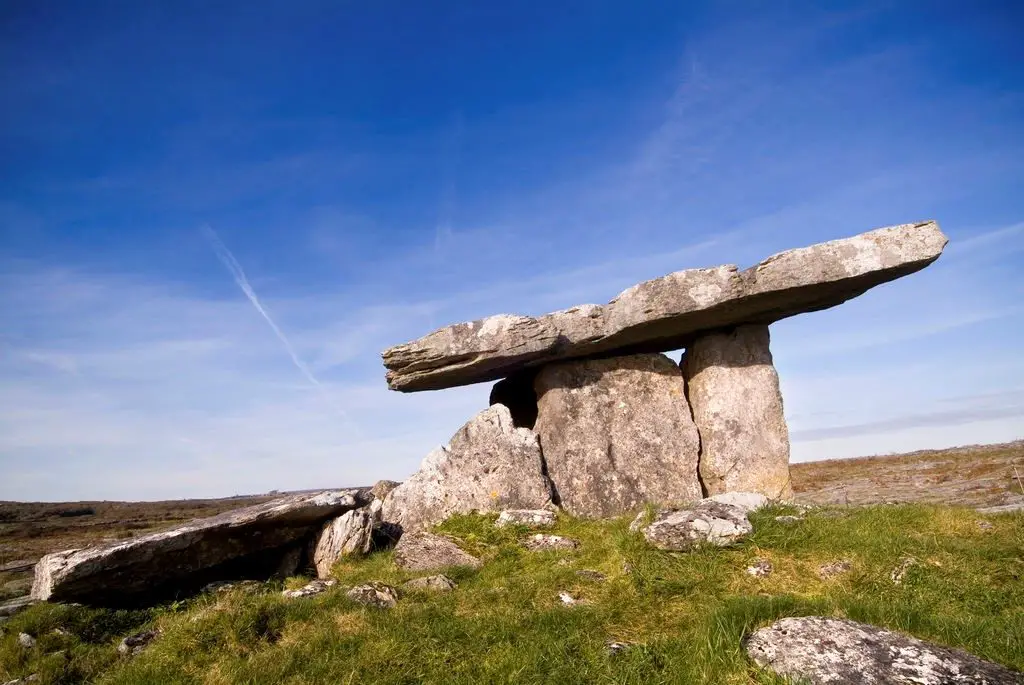
If you are looking for otherworldly beauty, then the Burren on the west coast of Ireland should definitely be added to your itinerary. Renowned for its flora, fauna and unique geology, this natural wonder draws people from all over the world to experience the magic of the rocky, lunar-like limestone (karst) landscape up close. Part of the Burren forms the Burren National Park and the area is also a designated UNESCO global Geopark.
A rocky limestone pavement covers the terrain and can, at first glance, look seemingly barren. However, when you take a closer look there is a huge variety of different plant species including Mediterranean, arctic-alpine and continental species found in the little nooks and crannies of the limestone rock. Late spring and early summer is the best time to see the blooms in this delicate ecosystem.
There is even more to be seen. Underground cave systems, such as the popular tourist attraction of Aillwee Cave, can provide another fascinating below ground insight into this remarkable area. The Burren has a long history of human settlement and evidence of this rich archaeological past is still clearly visible on the terrain in the form of ancient tombs, such as the spectacular Poulnabrone portal dolmen.
Pink Lake – Melbourne
Contributed by I Know the Pilot
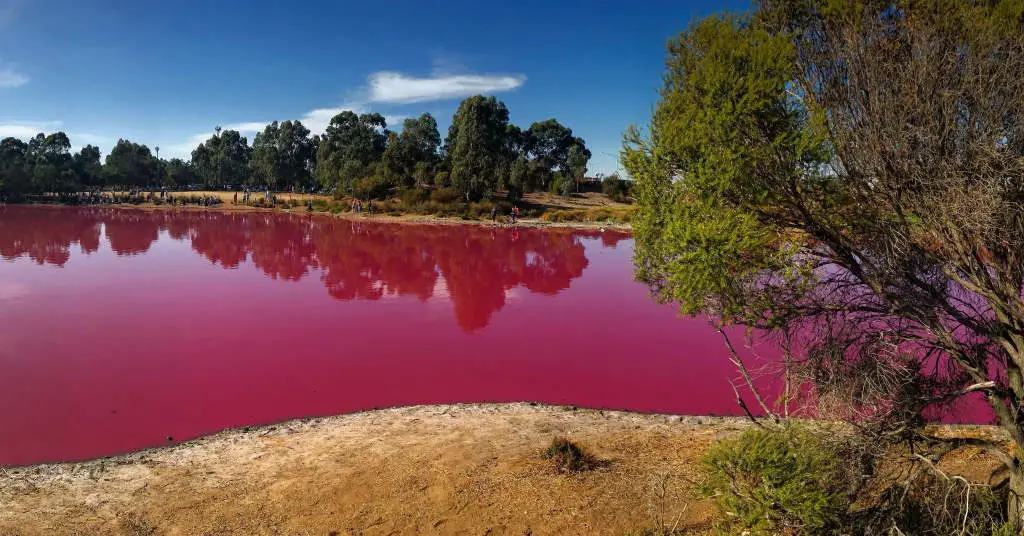
Like many Australians, I have long dreamt of visiting the beautiful, rainbow lakes scattered across Western and Southern Australia. Having lived as a Melbourne local my whole life, I was surprised when I first heard about our very own ‘Pink Lake’ in Melbourne. Once a well-kept secret, social media had quickly made it a must-visit selfie stop, and I had to see it for myself.
The lake is located in Westgate Park, just outside the Melbourne CBD and almost directly under the Westgate Bridge, one of our most famous Melbourne landmarks (and third-longest bridge in Australia). It is easy enough to find if you’re driving, though to get there on public transport from the city you will need to get two buses.
During Summer, in particularly hot weather, the already very salty lake loses even more moisture, causing the salt content to rise even further. These conditions allows a particular algae to flourish who produce high levels of beta carotene, which causes the bright pink colour.
The lake is free and safe to visit, but definitely not recommended for swimming. Visitors can wander around the lake, enjoy the sun, and don’t forget the selfie!
Volcan Pacaya – Guatemala
Contributed by Globeblogging
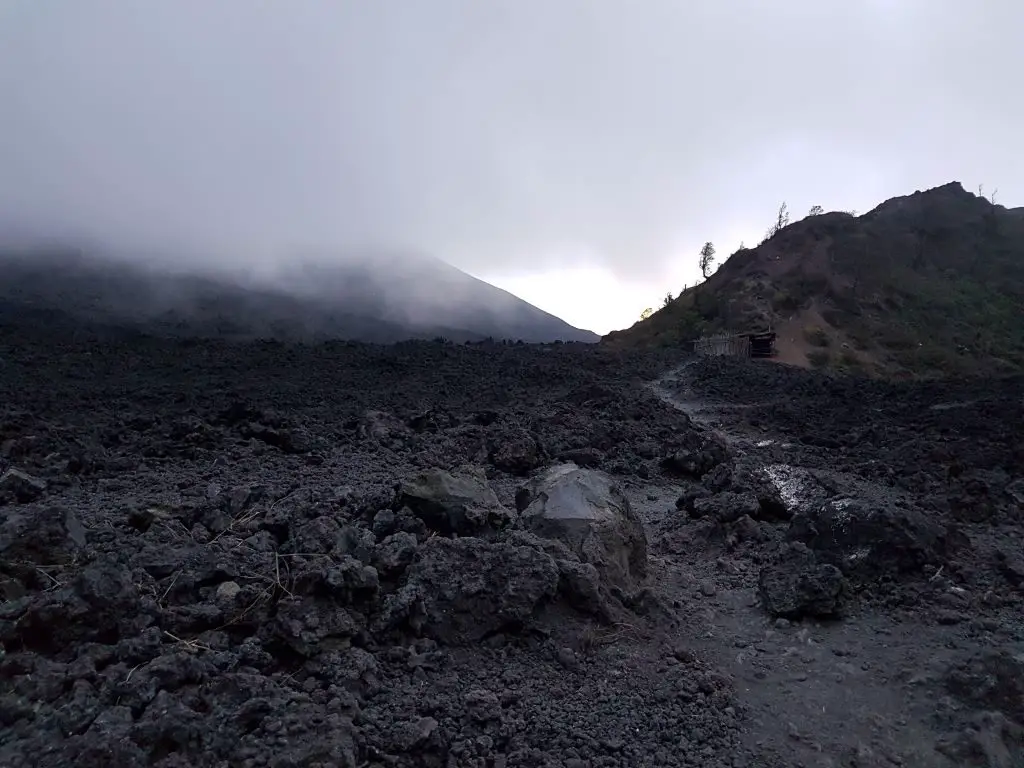
When it comes to otherworldly landscapes, it is hard to imagine one more out of this world than a lava field.
The lava flow of a volcano, hardened into sharp black rock as it dries and cools, lava fields can stretch for miles. Seeming sparse and dead, it is extremely fertile for plants hardy enough to burst forth.
Located about 90 minutes from the town of Antigua, Volcan Pacaya is one of several active volcanoes nearby. The area is a national park and while the trails are safe it is not permitted to traverse them without a guide. Entry into the national park is fifty Quetzals, less than US$7.
The hike to the top is 3.5 kilometres ascending 300 metres from the entry. While it doesn’t sound too challenging, bear in mind that you are already 2300m above sea level when you arrive. It can take you by surprise how much harder you work at higher altitudes.
The hike offers spectacular views of the Guatemalan countryside and Volcan Agua rising above Antigua. If you are lucky from the top you will see glowing lava. Some days it is unfortunately shrouded in mist, which adds to the strangeness of the landscape.
Green sand beach – Hawaii
Contributed by CosmopoliClan
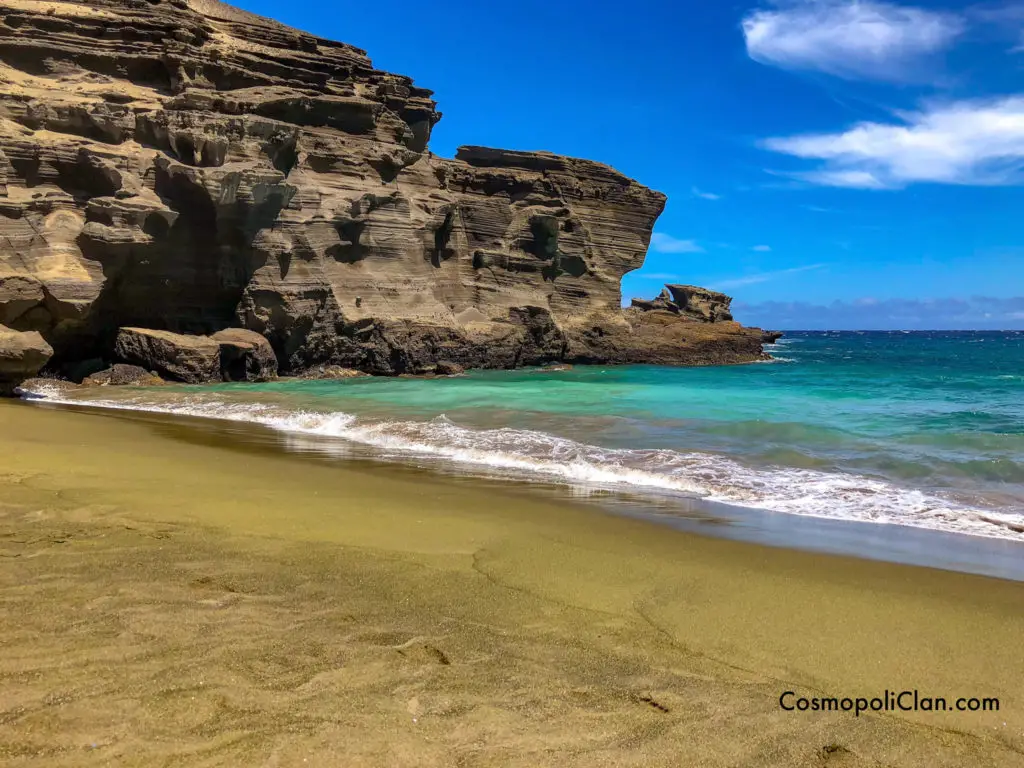
A beautiful and unique natural landscape can be found in Hawaii. Papakolea green sand beach is located at the southern tip of Big Island (HI), in Mahana Bay. The sand gets its color from the mineral olivine, that was formed when the volcano’s lava solidified and the magma crystalized.
It’s not just the sand that’s strikingly colorful: The aquamarine water in the bay is just as appealing and so is the unique rock formation which was shaped by eroding waves.
Reaching this unique beach requires some effort, since it’s located inside the remains of a volcanic crater amidst a landscape dotted with ancient cultural sites.
At the parking lot, there are locals who’ll offer to take you to the beach in the back of their truck for a fee. You should know that his activity is actually illegal since it damages the fragile ecosystem. The only legit way to get to this amazing beach is on foot. Once you hike your way from the parking area to the crater – about 2.6 miles without any shade – it takes a steep descent to reach the gorgeous green sand. It’s a challenging beach to reach but well worth the effort.
That concludes this epic list of the most otherworldly landscapes around the world. How many would you like to see in person?
Going travelling Soon? Don’t forget these essentials!
Flights: compare and search for the cheapest flights using Skyscanner
Accommodation: hotels to hostels, glamping to apartments, I always use Booking.com
Tours: to find the best group tours and activities worldwide (with up to 20% off), use Viator
Visa: don’t forget to check the entry requirements for the passport you are travelling with
Inspiration: to kick-start your next adventure, how about Lonely Planet’s Guide to the World?
PIN FOR LATER:
*This post may contain affiliate links meaning should you purchase a product via this link, I’ll earn a small commission at no extra cost to you. These are still products I use or believe in regardless. See my privacy and disclosure policy for more.*

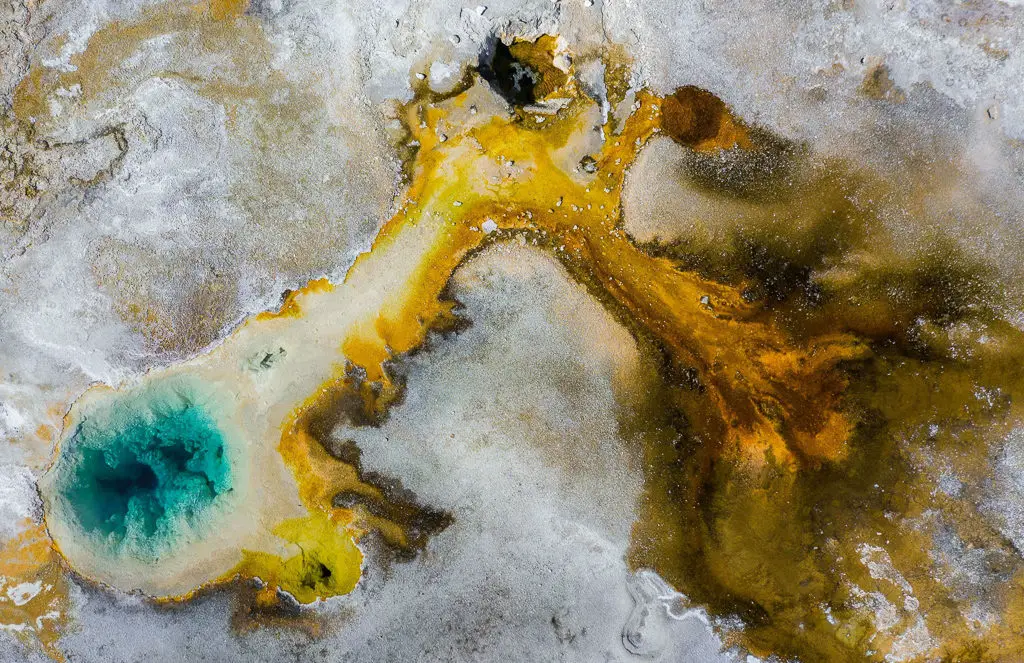
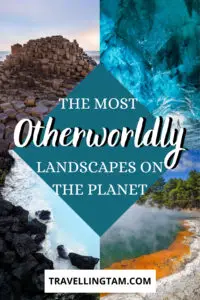
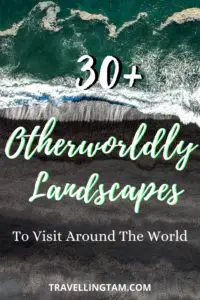
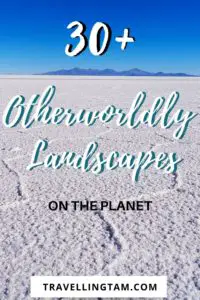
Wow, these are some fascinating places! I’d love to get to Iran and Kazakhstan sometime soon. I’d also add the Danakil Depression in Ethiopia to this list — salt flats, mountains of sulfuric acid, and camping on the rim of a bubbling lava lake!
Another ripping Article! Soo many places out there yet to see. My feet are itching to get back out there again!
Sameeeee!! :))
So many beautiful places to see in the world! Thank you so much for including the Kyzylkum Desert!
Isn’t there just! :))
These photos are absolutely stunning. Would love to visit Greenland. It looks AH-MAZING!
I know same here!!
Some of these places have been on my list since forever! And I still dream of getting to Namibia and going on a road trip around the country! I had my itinerary ready and all, but somehow things got postponed because we moved to Asia and wanted to see many places around here…
Namibia is so high up on my list too! I’m sure you’ll make it over soon – Asia has some pretty spectacular scenery to visit in the meantime though!
All of these gorgeous landscapes are definitely bucket list worthy! Some of them I’ve never even heard of. I would love to see Mt. Ijen one day!
I know right. Some great new discoveries to put on the list!
Wow this is an amazing post of some truly spectacular places on our beautiful planet! I have never heard of the pink lake and now I MUST see it! Thanks for all the great information!
Luckily there are a few of them all over the world – they are SO pretty! And no problem, thank you for reading 🙂
How incredible our world is. This post is absolutely beautiful and so needed right now. I loved reading it. My bucket list is forever growing.
Isn’t it just <3 I know, I added a fair few places putting this together! Thanks for your comment 🙂
These places are incredible! I had no idea there is a pink lake in Oman, how amazing. I also love that you included Mount Ijen! I feel like a lot of people don’t know about it!
Yes, there’s a good mix of well known and lesser known places here. I live in Melbourne and only knew about the pink lake a few months ago haha 🙂
They don’t even look real do they? So amazing! And I’m sad I’ve only been to one on this list, Drumheller Canada. Guess I’ve got some trip planning to do
Plenty of time indeed! x